'Star Trek's' interracial kiss 50 years ago boldly went where none had gone before
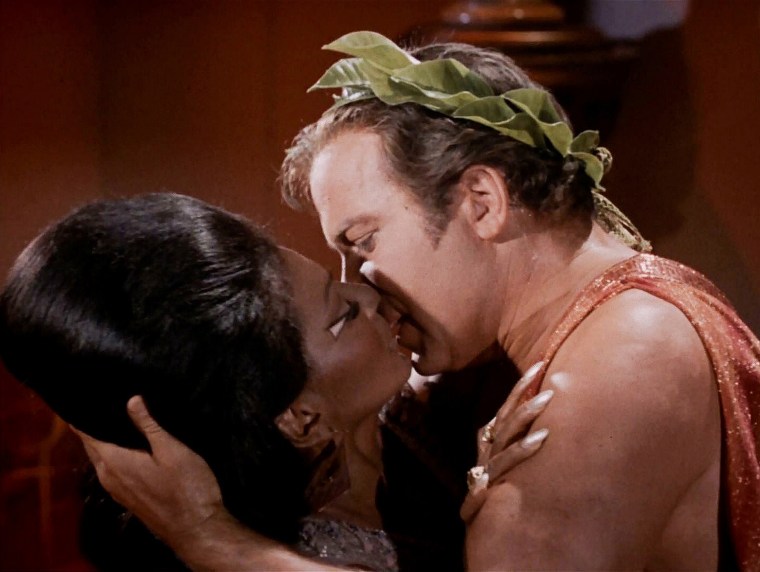
WASHINGTON — It was the kiss heard around the galaxy.
Fifty years ago — and only one year after the U.S. Supreme Court declared interracial marriage was legal — two of science fiction's most enduring characters, Capt. James T. Kirk and Lt. Nyota Uhura, kissed each other on "Star Trek."
It wasn't romantic. Sadistic, humanlike aliens forced the dashing white captain to lock lips with the beautiful black communications officer. But the kiss between actors William Shatner and Nichelle Nichols in "Plato's Stepchildren" would help change attitudes in America about what was allowed to be shown on TV and made an early statement about the coming acceptance of interracial relationships in a United States still struggling with racism and civil rights.
The kiss between Uhura and Kirk "suggested that there was a future where these issues were not such a big deal," said Eric Deggans, national television critic for National Public Radio. "The characters themselves were not freaking out because a black woman was kissing a white man. ... In this utopian-like future, we solved this issue. We're beyond it. That was a wonderful message to send."
"Plato's Stepchildren," which first aired on Nov. 22, 1968, came before Star Trek morphed into a cultural phenomenon. The show's producers, meanwhile, were concerned about one of the main episode elements: Humanlike aliens dressed as ancient Greeks that torture the crew with their telekinetic powers and force the two USS Enterprise crew members to kiss.
Worried about reaction from Southern television stations, showrunners filmed the kiss between Shatner and Nichols — their lips are mostly obscured by the back of Nichols' head — and wanted to film a second where it happened off-screen. But Nichols said in her book, "Beyond Uhura: Star Trek and Other Memories," that she and Shatner deliberately flubbed lines to force the original take to be used.
Despite concerns from executives, "Plato's Stepchildren" aired without blowback. In fact, it got the most "fan mail that Paramount had ever gotten on Star Trek for one episode," Nichols said in a 2010 interview with the Archive of American Television.
Officials at Paramount, the show's producer, "were just simply amazed and people have talked about it ever since," said Nichols.
While inside the show things were buzzing, the episode passed by the general public and the TV industry at that time almost without comment, said Robert Thompson, a Syracuse University professor of television and popular culture.


NBC OUT 'Star Trek' star George Takei says sci-fi can be 'a trailblazer' for social change
"It neither got the backlash one might have expected nor did it open the doors for lots more shows to do this," Thompson said. "The shot heard around the world started the American Revolution. The kiss heard around the world eventually did ... but not immediately."
This was a world where interracial marriage had just become legal nationwide.
In 1967, the year before "Plato's Stepchildren" aired, the Supreme Court struck down nationwide laws that made marriage illegal between blacks and whites, between whites and Native Americans, Filipinos, Asians and, in some states, "all non-whites
Only 3 percent of newlyweds were intermarried that year. In 2015, 17 percent of newlyweds — or at least 1 in 6 of newly-married people — were intermarried, according to a Pew Research Center analysis of U.S. Census Bureau data.
Most television — outside of the news — was escapist fare and not willing to deal with the raucous atmosphere in the 1960s, Thompson said.
"It was so hard for television in the 60s to talk about the 1960s," he said. "That kiss and that episode of Star Trek is an example of how every now and again television in that period tried to kick the door open to those kinds of representations."
Gene Roddenberry, Star Trek's creator, and his team had more leeway because he was writing about the future and not current life, experts said.
"Setting Star Trek three hundred years in the future allowed (Roddenberry) to focus on the social issues of the 1960s without being direct or obvious," Shatner said in his book "Leonard: My Fifty-Year Friendship with a Remarkable Man."
A later episode entitled "Let That Be Your Last Battlefield" highlighted the folly of racism by showing a generations-long battle between two people from the same planet who thought each other to be subhuman — one was black-skinned on the left side and white on the right, while the other was the opposite.
Throughout the ensuing decades, interracial relationships with black and white actors became more prevalent on television, spanning multiple genres. From comedies like "The Jeffersons" and "Happy Endings," to dramas such as "Parenthood," ''Six Feet Under" and "Dynasty," and back to sci-fi with the short-lived "Firefly."
The trend is still not without its detractors. In 2013, a Cheerios commercial featuring an interracial couple and their daughter drew thousands of racist comments online.
Historians have noted that interracial kisses between blacks and whites happened on British television during live plays as early as 1959, and on subsequent soap operas like "Emergency Ward 10."
In the U.S., interethnic kisses happened on "I Love Lucy" between the Cuban Desi Arnaz and the white Lucille Ball in the 1950s and even on Star Trek in 1967 with Mexican actor Ricardo Montalban kissing Madlyn Rhue in the "Space Seed" episode.
Other shows like "Adventures in Paradise" and "I Spy" featured kisses between white male actors and Asian actresses, and Sammy Davis Jr. kissed Nancy Sinatra on the cheek on a December 1967 episode of her televised special "Movin' with Nancy."
Whether another kiss came first doesn't really matter.
"For whatever reason, that one between Captain Kirk and Lieutenant Uhura seems to be the one that is marked as the milestone," Thompson said.
It stands out because it had a profound effect on viewers, Nichols said in 2010.
"The first thing people want to talk about is the first interracial kiss and what it did for them. And they thought of the world differently, they thought of people differently," she said.
Screen Rant
Star trek’s famous kirk & uhura kiss “would not have got done” without william shatner.

Your changes have been saved
Email Is sent
Please verify your email address.
You’ve reached your account maximum for followed topics.
Star Trek: The Original Series Cast & Character Guide
That ’90s show’s new forman family tease makes me sad for eric & donna after that ‘70s show, reid's criminal minds: evolution return just became way more likely.
- Shatner's insistence ensured Kirk and Uhura's iconic kiss stayed in Star Trek, a groundbreaking moment for diversity on TV.
- Despite NBC's concerns, no backlash was received for the interracial kiss, a memorable scene in a mediocre episode.
- Shatner's determination during filming made TV history by ensuring Kirk and Uhura's kiss was included on-screen.
Star Trek: The Original Series ' iconic interracial kiss between Captain James T. Kirk (William Shatner) and Lt. Uhura (Nichelle Nichols) would likely not have happened if not for William Shatner. Star Trek creator Gene Roddenberry wanted his series to push boundaries and depict a future where everyone was accepted for who they were. While Star Trek: The Original Series remains a product of its time, it undoubtedly helped pave the way for more diversity on television. Kirk and Uhura's iconic kiss, while not technically the first interracial kiss to air on television, was a monumental moment and received very little backlash from viewers despite the worries of NBC.
Kirk and Uhura's kiss happens in Star Trek: The Original Series season 3, episode 10, "Plato's Stepchildren," an otherwise mediocre episode about halfway through TOS' final season. "Plato's Stepchildren" begins when the USS Enterprise answers a distress call from a people known as the Platonians. The Platonians possess telekinetic powers and the leader, Parmen (Liam Sullivan), wishes Dr. Leonard McCoy (DeForest Kelley) to remain on the planet as their doctor. When he refuses, Parmen humiliates Kirk and his crew by forcing them to perform for them. In one instance, Parmen forces Kirk and Uhura to kiss in what would become one of Star Trek's most famous scenes.
Star Trek: The Original Series features some of the most iconic characters in all of science fiction with the crew of the original USS Enterprise.
William Shatner Says Star Trek’s First Interracial Kirk & Uhura Kiss Would Not Have Happened Without Him
Shatner made sure kirk's kiss with uhura stayed in the final episode..
William Shatner appeared on Real Time with Bill Maher to promote his autobiographical documentary, William Shatner: You Can Call Me Bill . Maher took the opportunity to ask Shatner about Star Trek's most famous kiss , and Shatner admitted it likely would not have happened if not for him. Read their conversation below:
Bill Maher: That moment, you were brave because from what I understand, NBC, of course, was nervous about it. I mean, we had seen before when Southern stations would cancel shows or not show them over something like that. And you kind of stuck to your guns and did the kiss.
William Shatner: Yes, I puckered up my lips and [makes kissing motion]... Like that. I mean, [Nichelle Nichols is] no longer with us, but in her lifetime, she was a remarkably attractive lady.
Bill Maher: Yes, but that’s not really the issue. I want to know, if you hadn’t insisted on doing it, would it have not got done?
William Shatner: It would not have got done. That’s bad English.
According to some of his fellow Star Trek cast members, Shatner was not always the easiest to work with, but he made Captain Kirk one of the most iconic television characters of all time. The legendary actor, who celebrated his 93rd birthday on March 22, 2024, ensured Captain Kirk and Uhura's kiss made it into the final cut of "Plato's Stepchildren." The late Nichelle Nichols has also spoken about the kiss scene in various interviews, and she, too, credits Shatner with making sure the scene made it to air.
William Shatner: You Can Call Me Bill will be available for video-on-demand rental or purchase everywhere on April 26th.
How Star Trek’s First Interracial Kiss Happened
Despite nbc's worries, there are no records of any complaints about the kiss..
When it came time to film the kiss scene in "Plato's Stepchildren," both the Star Trek episode's director, David Alexander, and studio executives at NBC were hesitant to show the full kiss, fearing it would anger certain viewers. The kiss was filmed as the last shot on the final day of shooting, and Gene Roddenberry was brought in to discuss how the scene should be shot. Nichelle Nichols, who famously remained in Star Trek because of Martin Luther King, Jr. , was not always respected on set. Roddenberry generally sided with Nichols when it came to Uhura, and he decided to shoot a take with the kiss and one without. William Shatner, however, had other ideas.
Shatner insisted on multiple takes, causing the shoot to run even further over schedule. Finally out of time, the director insisted on a no-kiss version of the shot, but Shatner wasn't done. This time, Captain Kirk leaned Uhura back to imply a kiss without it being on-screen, but Shatner deliberately looked into the camera and crossed his eyes. The director was unable to see this from his point of view and, believing the take to be a good one, he called cut. Of course, as the footage was reviewed later, the shot without the kiss was unusable, ensuring Kirk and Uhura's Star Trek: The Original Series kiss made television history.
Source: Real Time With Bill Maher
Star Trek: The Original Series is available to stream on Paramount+.
Star Trek: The Original Series
- William Shatner
The 'Star Trek' kiss that broke ground for race relations
In part 2 of our FACEism series, we look at a controversial 1968 episode of "Star Trek" that featured the first interracial kiss on television.

It was a kiss that changed the world. Or at least started to.
It happened on one of the most imaginative shows in history.
While some celebrated the moment. many others hated it.
All because of the color of their skin.
When Captain Kirk kissed Uhura on "Star Trek" in 1968, it was the first kiss between people of different races on television.
"That was shocking," recalls George Takei, who played Lt. Sulu on the groundbreaking sci-fi show. "That was never done on television"
In the video above, Eyewitness News explores the interracial kiss, the outraged reaction and how mixed couples at that time had to fight for their rights simply to love each other.
It's all part of the "FACEism" series that seeks to examine stereotyping and move toward a better understanding of each other.
See part 1 of the FACEism series, on the history of blackface, here.

The FACEism series will continue Tuesday with a report called "Where are you from?"
Related Topics
Top stories.

Israel rescues 4 hostages kidnapped in a Hamas-led attack on Oct. 7
- 8 minutes ago

1 killed, 4 injured in shooting at Compton pool party

Brush fire in Newhall comes dangerously close to homes

The dangers of thirdhand smoke: is your family at risk?

Community rallies to save MLK Hospital from budget cuts
Drug smuggling at LAX: Why the crisis goes beyond the airport
Video shows 2 Burbank officers 'dumping' homeless man in city of LA
New Victorville program aims to clean up residential properties
The Definitive Voice of Entertainment News
Subscribe for full access to The Hollywood Reporter
site categories
Hollywood flashback: ‘star trek’ showed tv’s first interracial kiss in 1968.
Nichelle Nichols says NBC execs originally wanted to shoot two different versions of the scene between her and William Shatner locked lips to avoid outrage among Southern affiliates, but "Bill was deliberately trying to flub it up."
By Bill Higgins
Bill Higgins
- Share on Facebook
- Share to Flipboard
- Send an Email
- Show additional share options
- Share on LinkedIn
- Share on Pinterest
- Share on Reddit
- Share on Tumblr
- Share on Whats App
- Print the Article
- Post a Comment

A story of prohibited interracial marriage, Loving set Cannes abuzz this month. But in 1968, Star Trek boldly took mixed-race kissing where U.S. TV had never gone before, with an episode in which Captain Kirk (William Shatner ) planted one on Lieutenant Uhura ( Nichelle Nichols).
Where Loving ‘s plot is relatively simple (white guy falls in love with black woman, they marry in 1958 Virginia, all hell breaks loose), Kirk and Uhura must pass through some galactically convoluted plot points before their lips meet. The Enterprise finds a planet inhabited by aliens who are followers of Plato and have developed psychokinetic powers. The crew gives them medical care, and the Platonites insist they stay. When Kirk declines, the aliens mess with their minds and force Kirk and Uhura to smooch against their will. (This is all done in dramatic Star Trek -style, with Uhura saying things like, “I’m so frightened, Captain! I’m so very frightened.”)
Related Stories
Amid 'star wars' saturation, where can 'star trek' go next.
There were reasons for the cast to be nervous about this TV first — the show was in its third season, and cancellation was imminent. But it was NBC that was reluctant to pull the trigger. Network execs were worried the interracial scene would upset Southern affiliates, so an effort was made to shoot coverage where Kirk and Uhura don’t actually lock lips. “We did a few takes, but Bill was deliberately trying to flub it,” recalls Nichols. “At one point, he even crossed his eyes to make me laugh.”
Eventually, the network gave up trying and ran the scene as written. And with an eye toward the Emmys and stirring up controversy, producers took out an ad in The Hollywood Reporter asking none too subtly if TV’s first interracial smooch was about to actually happen. Because of the kiss, “Plato’s Stepchildren” became such a famous Star Trek episode that when Comedy Central roasted Shatner in 2006, Nichols got a huge laugh when she said to him, “Let’s make TV history again — and you can kiss my black ass!”
This story first appeared in the June 3 issue of The Hollywood Reporter magazine. To receive the magazine, click here to subscribe .
THR Newsletters
Sign up for THR news straight to your inbox every day
More from The Hollywood Reporter
Howard university revokes sean “diddy” combs’ honorary degree following release of cassie assault video, ray j ponders whether sex tape with kim kardashian altered the course of humanity, hermès chooses new york city to stage first u.s. fashion show, rob schneider booted mid-set from another stage after attendees walk out, ariana grande stalks penn badgley in “the boy is mine” music video, featuring brandy and monica, celine dion says singing with stiff-person syndrome feels “like somebody is strangling you”.
ARTS & CULTURE
Fifty years ago, “star trek” aired tv’s first interracial kiss.
For actress Nichelle Nichols, the first black woman to have a continuing co-starring role on TV, it was the beginning of a lifelong career in activism
Matthew Delmont, The Conversation
/https://tf-cmsv2-smithsonianmag-media.s3.amazonaws.com/filer/d0/01/d001c71f-4d7f-47f7-b7e7-12638a41e663/first_interracial_kiss_on_tv.jpg)
On Nov. 22, 1968, an episode of “Star Trek” titled “ Plato’s Stepchildren ” broadcast the first interracial kiss on American television.
The episode’s plot is bizarre: Aliens who worship the Greek philosopher Plato use telekinetic powers to force the Enterprise crew to sing, dance and kiss. At one point, the aliens compel Lieutenant Uhura (Nichelle Nichols) and Captain Kirk (William Shatner) to embrace. Each character tries to resist, but eventually Kirk tilts Uhura back and the two kiss as the aliens lasciviously look on.
The smooch is not a romantic one. But in 1968 to show a black woman kissing a white man was a daring move.
The episode aired just one year after the U.S. Supreme Court’s Loving v. Virginia decision struck down state laws against interracial marriage. At the time, Gallup polls showed that fewer than 20 percent of Americans approved of such relationships .
As a historian of civil rights and media, I’ve been fascinated by the woman at the center of this landmark television moment. Casting Nichelle Nichols as Lieutenant Uhura created possibilities for more creative and socially relevant “Star Trek” storylines.
But just as significant is Nichols’s off-screen activism. She leveraged her role on “Star Trek” to become a recruiter for NASA, where she pushed for change in the space program. Her career arc shows how diverse casting on the screen can have a profound impact in the real world, too.
‘A triumph of modern-day TV’
In 1966, “Star Trek” creator Gene Rodenberry decided to cast Nichelle Nichols to play Lieutenant Uhura, a translator and communications officer from the United States of Africa. In doing so, he made Nichols the first African-American woman to have a continuing co-starring role on television.
The African-American press was quick to heap praise on Nichols’s pioneering role.
The Norfolk Journal and Guide hoped that it would “broaden her race’s foothold on the tube.”
The magazine Ebony featured Nichols on its January 1967 cover and described Uhura as “the first Negro astronaut, a triumph of modern-day TV over modern-day NASA.”
Yet the famous kiss between Uhura and Kirk almost never happened.
After the first season of “Star Trek” concluded in 1967, Nichols considered quitting after being offered a role on Broadway. She had started her career as a singer in New York and always dreamed of returning to the Big Apple.
But at a NAACP fundraiser in Los Angeles, she ran into Martin Luther King Jr.
Nichols would later recount their interaction.
“You must not leave,” King told her . “You have opened a door that must not be allowed to close…you changed the face of television forever…For the first time, the world sees us as we should be seen, as equals, as intelligent people.”
King went on to say that he and his family were fans of the show; she was a “hero” to his children.
With King’s encouragement, Nichols stayed on “Star Trek” for the original series’ full three-year run.
Nichols’ controversial kiss took place at the end of the third season. Nichols recalled that NBC executives closely monitored the filming because they were nervous about how Southern television stations and viewers would react.

After the episode aired, the network did receive an outpouring of letters from viewers – and the majority were positive .
In 1982, Nichols would tell the Baltimore Afro-American that she was amused by the amount of attention the kiss generated, especially because her own heritage was “a blend of races that includes Egyptian, Ethiopian, Moor, Spanish, Welsh, Cherokee Indian and a ‘blond blue-eyed ancestor or two.’”
Space crusader
But Nichols’s legacy would be defined by far more than a kiss.
After NBC canceled Star Trek in 1969, Nichols took minor acting roles on two television series, “ Insight ” and “ The D.A. ” She would also play a madame in the 1974 blaxploitation film “ Truck Turner .”
She also started to dabble in activism and education. In 1975, Nichols established Women in Motion, Inc. and won several government contracts to produce educational programs related to space and science. By 1977, she had been appointed to the board of directors of the National Space Institute , a civil space advocacy organization.
That year she gave a speech at the institute’s annual meeting, “New Opportunities for the Humanization of Space, or Space: What’s in it for Me?” In it, she critiqued the lack of women and minorities in the astronaut corps, challenging NASA to “come down from your ivory tower of intellectual pursuit, because the next Einstein might have a Black face – and she’s female.”
Several of NASA’s top administrators were in the audience. They invited her to lead an astronaut recruitment program for the new space shuttle program. Soon, she packed her bags and began traveling the country, visiting high schools and colleges, speaking with professional organizations and legislators, and appearing on national television programs such as “Good Morning America.”
“The aim was to find qualified people among women and minorities, then to convince them that the opportunity was real and that it also was a duty, because this was historic,” Nichols told the Baltimore Afro-American in 1979. “I really had this sense of purpose about it myself.”
In her 1994 autobiography, “ Beyond Uhura ,” Nichols recalled that in the seven months before the recruitment program began, “NASA had received only 1,600 applications, including fewer than 100 from women and 35 from minority candidates.” But by the end of June 1977, “just four months after we assumed our task, 8,400 applications were in, including 1,649 from women (a 15-fold increase) and an astounding 1,000 from minorities.”
Nichols’s campaign recruited several trailblazing astronauts, including Sally Ride, the first American woman in space, Guion Bluford, the first African-American in space, and Mae Jemison, the first African-American woman in space.
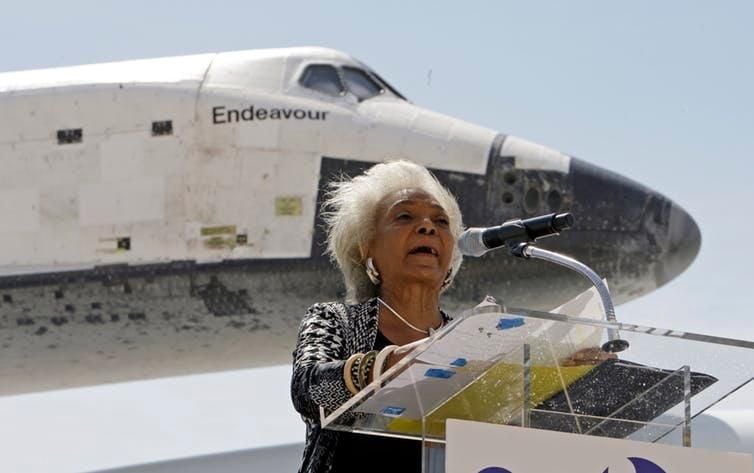
Relentless advocacy for inclusion
Her advocacy for inclusion and diversity wasn’t limited to the space program.
As one of the first black women in a major television role, Nichols understood the importance of opening doors for minorities and women in entertainment.
Nichols continued to push for African-Americans to have more power in film and television.
“Until we Blacks and minorities become not only the producers, writers and directors, but the buyers and distributors, we’re not going to change anything,” she told Ebony in 1985 . “Until we become industry, until we control media or at least have enough say, we will always be the chauffeurs and tap dancers.”
It’s an issue that, unfortunately, remains relevant today. In February of this year, UCLA’s annual Hollywood Diversity Report found that women and people of color continue to be underrepresented as directors and in studio board rooms. It concluded that “Hollywood studios are leaving money on the table by not developing films and TV shows with more diverse casts.”
Fifty years ago, Nichols’s kiss may have broken an important cultural barrier. But as Nichols well knows, the quest to secure opportunities for women and minorities persists to this day – an effort that requires relentless pressure.
The Conversation's new podcast “ Heat and Light ” features Professor Delmont discussing this story in depth .
Matthew Delmont, Professor of History, Arizona State University
Get the latest Travel & Culture stories in your inbox.
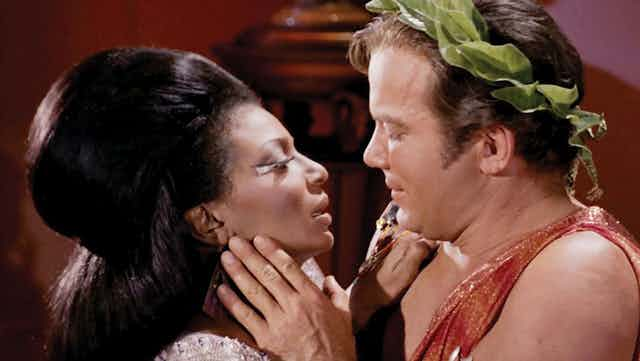
50 years after Star Trek’s ‘kiss’, how have attitudes towards interethnic marriage changed?
Senior Lecturer In Psychology, Brunel University London
Disclosure statement
Stanley Gaines does not work for, consult, own shares in or receive funding from any company or organisation that would benefit from this article, and has disclosed no relevant affiliations beyond their academic appointment.
Brunel University London provides funding as a member of The Conversation UK.
View all partners
In the long-running sci-fi serial Star Trek, the mission of the crew of the starship USS Enterprise is to “ boldly go where no one has gone before ”. This was most often apparent in the crew’s discovery of new worlds and new beings in the course of the drama.
But the series pushed another new boundary 50 years ago when, having been subjected to “sadistic” mind control by aliens, Captain James Kirk (played by William Shatner) and Lieutenant Nyota Uhura (played by Nichelle Nichols) were compelled to passionately kiss each other . With Shatner a Canadian-born actor of European descent and Nichols an American-born actress of African descent, this became one of the earliest, and by far the most watched, scripted interracial kiss on US television. While the kiss is tame by today’s standards, in 1968 it was certainly somewhere few men or women in US television had gone before.
Read more: An Interracial Kiss – on Another Planet
The kiss occurred at a time when only a minuscule proportion of couples within the US married across racial or other ethnic boundaries. Estimates vary, but according to a 2017 Pew Research Centre report fewer than 3% of US marriages were interethnic in 1968 – just one year after the US Supreme Court had struck down the existing anti-miscegenation state laws against mixed relationships as unconstitutional in the Loving vs Virgina case . By contrast, in 2015 (the most recent year for which detailed statistics are available) around 10% of US marriages were interethnic, fuelled largely by newlyweds: 17% of all new US marriages were mixed marriages.
The change in the proportion of interethnic marriages in the US during the past 50 years is striking, although this still implies that around 90% of individuals continue to marry within their ethnic group. This is driven mostly by the tendency of non-Hispanic, European-descent individuals to marry among their own.
Read more: TV's first interracial kiss launched a lifelong career in activism
In the Pew Research Centre report , authors Gretchen Livingston and Anna Brown credit the rise in interethnic marriage with a corresponding change in public attitudes across time. For example, as recently as 1990, a staggering 63% of those not of African descent expressed disapproval towards the idea of a family members’ marriage to someone of African descent. By 2016, that rate had tumbled to 14%.
For comparison, this rate of disapproval was substantially higher than the same perspective from the other side, that of non-white people disapproving of their family members marrying someone of a white background, which stood at 4%. Among those of Asian or Hispanic descent, the same disapproving view of intermarriage stood at around 9%.
So if the rise in interethnic marriage has led to a decrease in negativity among public attitudes toward interethnic marriage over the last two generations, can we also link this increasing interethnicity to increasingly positive attitudes on that topic? A recent addition to attitude surveys is the question of whether interethnic marriage is good for US society, and according to the report the news seems favourable. The proportion of respondents saying that interethnic marriage is a good thing for US society rose from 24% in 2010 to 39% in 2017. For comparison, around 9% said that interethnic marriage was bad for US society, and 52% said that interethnic marriage made no difference.
I believe that the authors were correct to identify the rise of interethnic marriage as having contributed to a decrease in negative attitudes, and increase in positive attitudes. But I also believe that, as Gordon Allport predicted in The Nature of Prejudice , in 1954, it is necessary for government officials to lead the way in their words and deeds if interethnic couples are to be able to marry safely in the US. Civil rights-era shows such as Star Trek in 1968, alongside movies such as Guess Who’s Coming To Dinner in 1967, both mirrored and helped contribute to changing public attitudes in their own way.
Has the “Trump effect” made a difference to attitudes? Based partly on trends I noticed while writing Identity and Interethnic Marriage in the United States, I suspect that some racists have felt increasingly emboldened in stating their opposition to interethnic marriage, especially towards couples comprised of black men and white women. Yet among the 70% of Americans who are not Trump supporters, the rise in interethnic marriage will not be a subject of major concern (and, in fact, the rate will continue to rise).
There is no comparable data to that from the Pew Research Centre that covers the UK, but as the political fallout over Brexit continues I would speculate that the UK has its own issues to address. For example, what will be the fate of marriages between EU residents and UK citizens once Brexit is fully implemented? Nevertheless, I would suppose that interethnic marriages in the UK will continue to rise as young people (in particular) increasingly marry without limiting themselves to “traditional” ethnic boundaries.
In any event, on either side of the Atlantic, 50 years and two generations on from “the kiss”, we can see how far we have progressed – and how far we still have to go.
- US politics
- Racial issues
- Race relations
- Racial diversity
- Interracial marriage

Head of School, School of Arts & Social Sciences, Monash University Malaysia

Chief Operating Officer (COO)

Clinical Teaching Fellow

Data Manager

Director, Social Policy
Old News, Vintage Photos & Nostalgic Stories
William shatner explains how ‘star trek’ almost didn’t air the historic interracial kiss.
- Entertainment
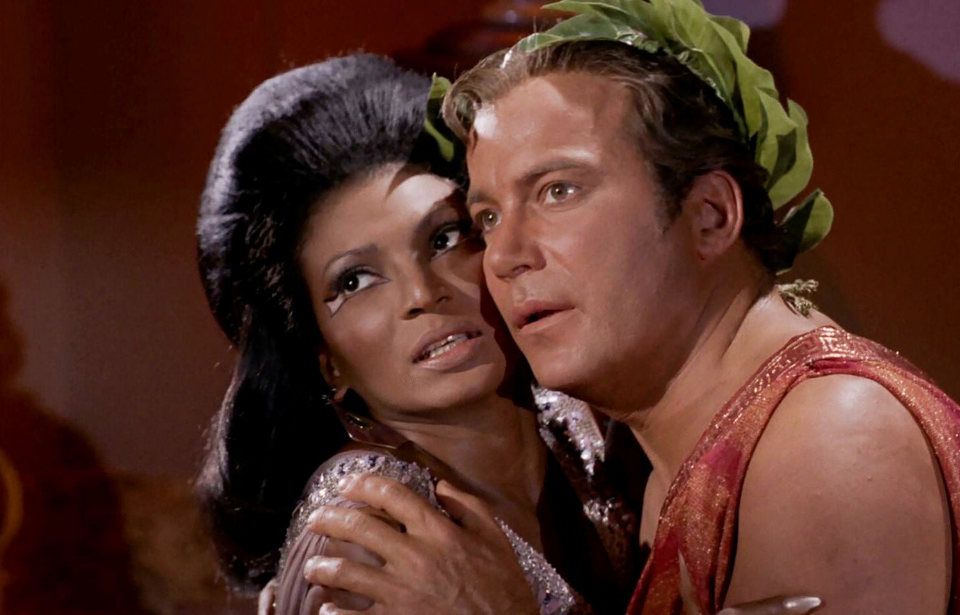
Captain Kirk is actor William Shatner ‘s most recognizable and iconic role played throughout his seven-decade career. In StarTrek , he starred alongside Nichelle Nichols , who played Lieutenant Uhura, and the pair shared one of the greatest moments in television history: one of the first interracial kisses aired on American television. The episode was titled “Plato’s Stepchildren,” but in a recent interview , Shatner explained how the kiss almost didn’t happen.
The network didn’t want it
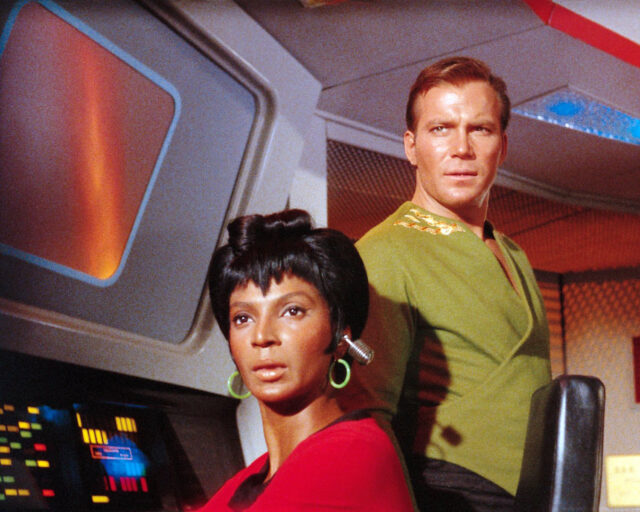
At the time of filming for the episode, struggles with racism and civil rights were rampant in America, so the network was concerned about the interracial kiss. Specifically, they worried that the kiss would upset television stations in the Deep South, and they didn’t want to turn off their conservative audience down there. As such, they tried to come up with a different solution.
They suggested having Spock, the half-Vulcan character in the series, kiss Uhura instead of Kirk. However, Shatner insisted that the production stick with the original script. As they continued filming, Shatner and Nichols were told to use a technique that saw their heads turn away from the camera, suggesting that they were kissing but not actually locking lips. That wasn’t going to work for the two actors.
Shatner and Nichols were sneaky about it
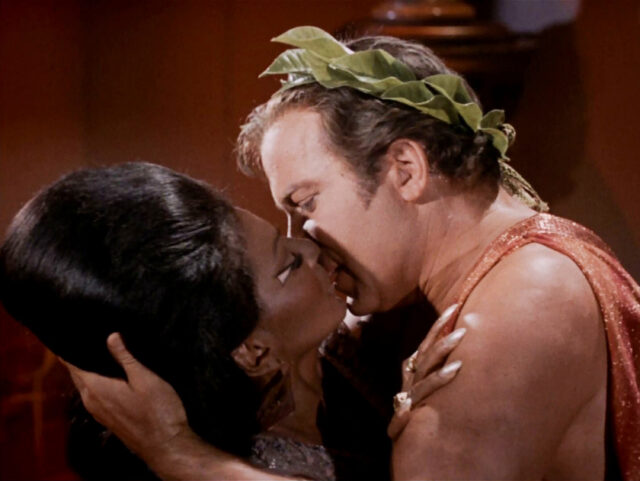
When it came to filming the scene, the network opted to have two versions of the same scene: one where the kiss took place on-screen and another where it was assumed to have taken place off-screen. While Shatner and Nichols participated in the latter version of the episode, they deliberately messed up their lines so that that version of the scene was unusable.
In her autobiography, Beyond Uhura: Star Trek and Other Memories , Nichols explained that “The only alternative was to cut out the scene altogether, but that was impossible to do without ruining the entire episode. Finally, the guys in charge relented: ‘To hell with it. Let’s go with the kiss.’ I guess they figured we were going to be canceled in a few months anyway. And so the kiss stayed.”
The episode went down in history
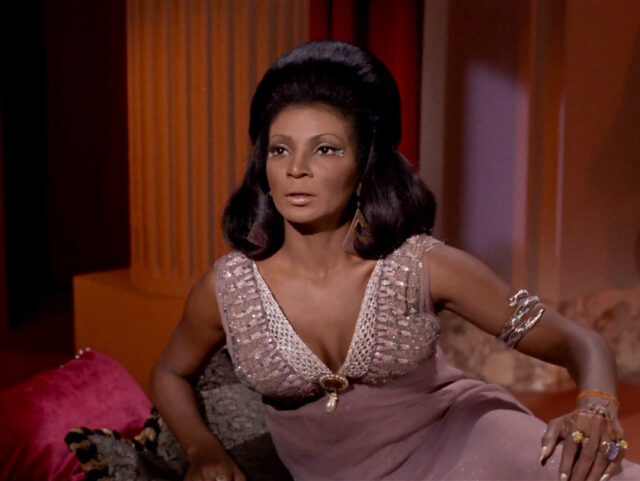
The Star Trek episode, including the interracial kiss, first aired on November 22, 1968. It made history, becoming what most believe to be one of the first interracial kisses aired on American television. Despite the concerns of the network, the episode was not met with much backlash. However, decades later, Shatner was asked if the scene would have happened if not for his insistence, to which he replied, “It would have not got done.”
More from us: 8 Movies That Aren’t Considered ‘Scary’ but Still Scare the Crap Out of Us
Star Trek was already applauded by audiences for its multiracial crew that worked together to explore space. It is no surprise then that it served as the series to feature Nichols as one of the first black women to star in a major television series. She died on July 30, 2022, at the age of 89 years old. Shatner, discussing the kiss, said that she was a beautiful woman “in her lifetime.”
Ready to go on a timeless adventure? Subscribe to The Vintage Newsletter now! Join us in exploring the captivating tapestry of history, where every click reveals a new chapter in the story of humanity. Don’t just read history – experience it firsthand. Sign up today and let the past come alive in your inbox!

Star Trek’s interracial kiss 50 years ago heralded change
Share this story
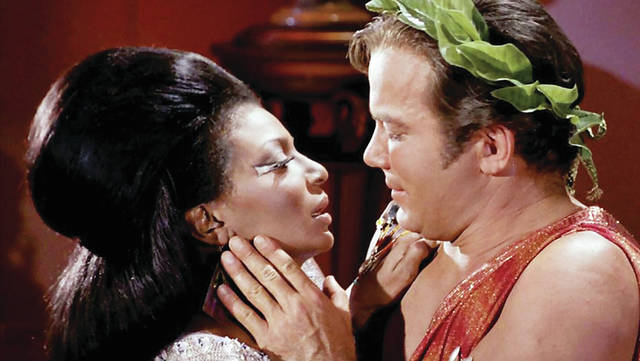
WASHINGTON — It was the kiss heard around the galaxy.
Fifty years ago — and only one year after the U.S. Supreme Court declared interracial marriage was legal — two of science fiction’s most enduring characters, Captain James T. Kirk and Lieutenant Nyota Uhura, kissed each other on “Star Trek.”
ADVERTISING
It wasn’t romantic. Sadistic, humanlike aliens forced the dashing white captain to lock lips with the beautiful black communications officer. But the kiss between actors William Shatner and Nichelle Nichols in “Plato’s Stepchildren” would help change attitudes in America about what was allowed to be shown on TV and made an early statement about the coming acceptance of interracial relationships in a United States still struggling with racism and civil rights.
The kiss between Uhura and Kirk “suggested that there was a future where these issues were not such a big deal,” said Eric Deggans, national television critic for National Public Radio. “The characters themselves were not freaking out because a black woman was kissing a white man … In this utopian-like future, we solved this issue. We’re beyond it. That was a wonderful message to send.”
“Plato’s Stepchildren,” which first aired on Nov. 22, 1968, came before Star Trek morphed into a cultural phenomenon. The show’s producers, meanwhile, were concerned about one of the main episode elements: Humanlike aliens dressed as ancient Greeks that torture the crew with their telekinetic powers and force the two USS Enterprise crew members to kiss.
Worried about reaction from Southern television stations, showrunners filmed the kiss between Shatner and Nichols — their lips are mostly obscured by the back of Nichols’ head — and wanted to film a second where it happened off-screen. But Nichols said in her book, “Beyond Uhura: Star Trek and Other Memories,” that she and Shatner deliberately flubbed lines to force the original take to be used.
Despite concerns from executives, “Plato’s Stepchildren” aired without blowback. In fact, it got the most “fan mail that Paramount had ever gotten on Star Trek for one episode,” Nichols said in a 2010 interview with the Archive of American Television.
Officials at Paramount, the show’s producer, “were just simply amazed and people have talked about it ever since,” said Nichols.
While inside the show things were buzzing, the episode passed by the general public and the TV industry at that time almost without comment, said Robert Thompson, a Syracuse University professor of television and popular culture.
“It neither got the backlash one might have expected nor did it open the doors for lots more shows to do this,” Thompson said. “The shot heard around the world started the American Revolution. The kiss heard around the world eventually did … but not immediately.”
This was a world where interracial marriage had just become legal nationwide.
In 1967, the year before “Plato’s Stepchildren” aired, the Supreme Court struck down nationwide laws that made marriage illegal between blacks and whites, between whites and Native Americans, Filipinos, Asians and, in some states, “all non-whites.”
Only 3 percent of newlyweds were intermarried that year. In 2015, 17 percent of newlyweds — or at least 1 in 6 of newly-married people — were intermarried, according to a Pew Research Center analysis of U.S. Census Bureau data.
Most television — outside of the news — was escapist fare and not willing to deal with the raucous atmosphere in the 1960s, Thompson said.
“It was so hard for television in the 60s to talk about the 1960s,” he said. “That kiss and that episode of Star Trek is an example of how every now and again television in that period tried to kick the door open to those kinds of representations.”
Gene Roddenberry, Star Trek’s creator, and his team had more leeway because he was writing about the future and not current life, experts said.
“Setting Star Trek three hundred years in the future allowed (Roddenberry) to focus on the social issues of the 1960s without being direct or obvious,” Shatner said in his book “Leonard: My Fifty-Year Friendship with a Remarkable Man.”
A later episode entitled “Let That Be Your Last Battlefield” highlighted the folly of racism by showing a generations-long battle between two people from the same planet who thought each other to be subhuman – one was black-skinned on the left side and white on the right, while the other was the opposite.
Throughout the ensuing decades, interracial relationships with black and white actors became more prevalent on television, spanning multiple genres. From comedies like “The Jeffersons” and “Happy Endings,” to dramas such as “Parenthood,” ”Six Feet Under” and “Dynasty,” and back to sci-fi with the short-lived “Firefly.”
The trend is still not without its detractors. In 2013, a Cheerios commercial featuring an interracial couple and their daughter drew thousands of racist comments online.
Historians have noted that interracial kisses between blacks and whites happened on British television during live plays as early as 1959, and on subsequent soap operas like “Emergency Ward 10.”
In the U.S., interethnic kisses happened on “I Love Lucy” between the Cuban Desi Arnaz and the white Lucille Ball in the 1950s and even on Star Trek in 1967 with Mexican actor Ricardo Montalban kissing Madlyn Rhue in the “Space Seed” episode.
Other shows like “Adventures in Paradise” and “I Spy” featured kisses between white male actors and Asian actresses, and Sammy Davis Jr. kissed Nancy Sinatra on the cheek on a December 1967 episode of her televised special “Movin’ with Nancy.”
Whether another kiss came first doesn’t really matter.
“For whatever reason, that one between Captain Kirk and Lieutenant Uhura seems to be the one that is marked as the milestone,” Thompson said.
It stands out because it had a profound effect on viewers, Nichols said in 2010.
“The first thing people want to talk about is the first interracial kiss and what it did for them. And they thought of the world differently, they thought of people differently,” she said.
Leave a Reply Cancel reply
Your email address will not be published. Required fields are marked *
- 1 As solar power surges in the United States, wind struggles
- 2 Biden straddles the patriotic and the political in speech at Normandy
- 3 At 45, he vies with women half his age, seeking an Olympic first
- 4 Tropical Gardening: Warm summer days mean fragrant gardens
- 5 Fourth UH men’s volleyball signee gets team closer to goal
Featured Jobs
Star Trek: Spock and Uhura Almost Hooked Up WAY Before the Reboot

Your changes have been saved
Email Is sent
Please verify your email address.
You’ve reached your account maximum for followed topics.
Harley Quinn Season 5 Gets a Major Release Update
10 house of the dragon details most fans missed in season 1, rumor: daredevil: born again action scenes draws x-men '97 comparisons.
The amount of ink used to describe the many ways the original Star Trek series broke new ground could fill a swimming pool. By far, its most landmark moment, and a critical turning point for civil rights and equality, occurred in 1968 when Captain Kirk and Lieutenant Uhura kissed on the lips. And like all good romance tales, there was no shortage of drama going on behind the camera, including a cunning plot twist to outfox the censors and save the scene.
Long before director J. J. Abrams made Uhura and Spock a couple in his Star Trek universe; the same thing almost happened over 40 years ago on television. When The Original Series was running, an episode called for a kiss between the Enterprise crew. According to Nichelle Nichols, Lt. Uhura's partner was supposed to be Spock. The Vulcan doctor had become an extremely popular sex symbol, so his pairing with Uhura would be well received by fans. However, Captain Kirk wasn't quite as thrilled about the pairing.
RELATED: Star Trek: Why Spock Never Mentioned His Sister, Michael Burnham
Nichols says Shatner wanted to swap partners and insert himself as the scene's amorous actor, not his popular co-star, Leonard Nimoy . As such, adjustments were made, and one kiss led to another. After much rehearsing, it was time for the big moment that everyone knew would be history-making.
In the Season 3 episode, "Plato’s Stepchildren," the Enterprise crew is forced by telekinesis to perform and kiss for the delight of their captors. But when it came time to film the scene with Kirk and Uhura, the episode's director, someone Nichols said she worked with before with no problems, suddenly had issues.
The director was concerned the kiss wouldn't be well received in the South. So he conferred with Shatner while Nichols stood next to them. Nichols says she was indifferent to the “corny scene," she just wanted everyone to get on the same page. Finally, with creator Gene Roddenberry and studio execs on hand, Roddenberry said to shoot it “both ways," one with a kiss, one without. That was the plan, but in Star Trek , the Captain has the final say.
RELATED: Star Trek: Starfleet Had a Forgotten Klingon Officer BEFORE Worf
The workday was ending, and the scene had to be shot, so the on-camera kiss went first. But Shatner kept asking for another take. Finally, with only a sliver of time left before production would bleed into costly over-time for the crew, the director shot one last take and the only “non-kiss."
The final take unfolded like the others, only Shatner dipped Nichols forward, straight to camera, and leaned in -- their mouths not fully visible. However, what no one else knew, except the person working the camera, was that once Shatner leaned in for the unseen kiss, he looked into the lens and crossed his eyes. Shatner blew the shot. But instead of asking for it another, the director called a wrap, seemingly convinced he had what he needed.
RELATED: Star Trek: Why the BBC Stopped Airing Four Original Series Episodes for Decades
The next day, the group gathered to watch the raw “dailies” of the big scene. After sitting through an endless run of kiss takes, the last take rolled. Only then did the director, who clearly hadn't been paying attention on the set, sat in shock -- along with the rest of the audience at what played out on screen. With no real option, the kiss stayed in Stark Trek . The Captain had outmaneuvered the chance for censorship. “I tried to make it so they couldn’t edit it out," Shatner said .
It was a watershed moment for television that might not have happened if it had played out as originally intended. It is worth noting that Sammy Davis, Jr. and Nancy Sinatra shared a kiss on TV a year earlier in 1967, but on the cheek, not the lips. As such, Kirk and Uhura were the first passionate kiss on American TV between a white man and a Black woman, boldly going where no show had gone before.
KEEP READING: Woman in Motion Director Explores Star Trek's Nichelle Nichols' NASA Legacy
- CBR Exclusives
- Mobile Site
- Staff Directory
- Advertise with Ars
Filter by topic
- Biz & IT
- Gaming & Culture
Front page layout
Space is for everyone —
Woman in motion tells story of how star trek ’s uhura changed nasa forever, "if they let me in the door, i will open it so wide that they will see the world.".
Jennifer Ouellette - Jun 6, 2021 9:32 pm UTC
Actress Nichelle Nichols will forever be remembered for playing Uhura in Star Trek: The Original Series —one of the first Black women to play a prominent role on television—as well as engaging in the first interracial kiss on scripted television in the US. Less known is her equally seminal role as an ambassador for NASA in the 1970s, working tirelessly to bring more diversity to the agency's recruitment efforts. That work is highlighted in Woman in Motion , a new documentary directed by Todd Thompson that is now streaming on Paramount+.
Thompson himself was not a hardcore Star Trek fan growing up, although he had seen most of the movies and was certainly familiar with Nichols' portrayal of Uhura. His producing partners were fans, however, and when they told him about Nichols' contributions to NASA, he decided it was a story that had to be told. Over the course of production, he interviewed dozens of people about how Nichols inspired them and also spent a considerable amount of time with the actress herself, now 88.
Further Reading
"She's the definition of Hollywood royalty for me," Thompson told Ars. "How she carries herself, how she treats others, how she engages with you—she's so incredibly magnetic. What she did was so paramount to giving us a blueprint of where we need to go, how we need to be, if we're going to make any sort of progress here on Earth and beyond the stars. I was very humbled by the responsibility to tell her story and tell it the right way."
Woman in Motion starts out as a fairly standard biopic, exploring Nichols' early days as a dancer and singer. She had wanted to become the first Black ballerina, and by age 14 landed her first gig at the Sherman Hotel in Chicago. She subsequently toured the US, Canada, and Europe with Duke Ellington and Lionel Hampton before settling in Los Angeles in 1960 to pursue acting. "Her journey wasn't a straight line," said Thompson. "It was very zig-zaggy, and yet it had a definite direction, unbeknownst to her at the time. All the stars lined up in a very nice way."
Among Nichols' first roles was playing a Black soldier's fiancee on a short-lived series called The Lieutenant , produced by Gene Roddenberry. The episode (which never aired) was entitled "To Set It Right" and dealt explicitly with racial prejudice. So when Roddenberry began developing a new series, originally titled Wagon Train to the Stars , he thought of her for one of the roles. That show became Star Trek , and Nichols made history as Uhura. (In her autobiography , Nichols revealed that she had been romantically involved with Roddenberry before he met his wife, Majel Hudec , although the affair ended well before she was cast in Star Trek .)
Nichols very nearly quit the series after the first season, frustrated with what she perceived to be a constantly diminished role. But a chance encounter with Martin Luther King Jr. changed her mind. "You cannot, you cannot," she recalled him saying when she told him she wanted to leave the series. "For the first time on television, we will be seen as we should be seen every day, as intelligent, quality, beautiful people, who can sing, dance, and can go to space, who are professors, lawyers. If you leave, that door can be closed because your role is not a Black role, and it is not a female role, he can fill it with anybody, even an alien."
After the original series ended, Nichols attended a 1975 Star Trek convention, where NASA's director of science was also speaking. He expressed his admiration for Uhura. She in turn spoke about her love of space and NASA, but also of her sense of disenfranchisement: "I didn't see me" in the modern space program, she recalls in the film. When NASA claimed it couldn't find qualified Black people, Nichols didn't buy it, insisting that Black people and women weren't applying to the program because they didn't believe NASA was serious about giving them a chance. So she became a NASA spokesperson through her company, Women in Motion.
- Actress Nichelle Nichols is best known for playing Uhura in Star Trek: The Original Series . Paramount+
- Uhura was the translation and communications officer aboard the USS Enterprise in the original Star Trek series. YouTube/Paramount+
- In the 1968 episode "Plato's Stepchildren," Uhura and Kirk shared a notorious interracial kiss. Paramount+
- After the series ended, Uhura became a NASA ambassador, recruiting minority and female personnel for the space agency. YouTube/Paramount+
- For its space shuttle program, NASA needed mission specialists as well as astronauts. Paramount+
- Astronaut Sally Ride became the first American woman in space—in part because of Nichols' outreach efforts. YouTube/Paramount+
- Nichols was close to astronaut Judith Resnick—the second American woman in space. YouTube/Paramount+
- Among NASA's first Black astronauts were Ronald McNair, Guion Bluford, and Frederick D. Gregory. Public domain
- Resnick and McNair were among the crew members killed in the Space Shuttle Challenger disaster in 1986. Publiv domain
- Mae Jemison became the first Black woman in space as a mission specialist on the Space Shuttle Endeavour . YouTube/Paramount+
- George Takei co-starred with Nichols on Star Trek: TOS , playing helmsman Mr. Sulu. Paramount+
- Martin Luther King III remembers his father's recognition of the importance of Uhura to Black representation. Paramount+
- Col. Frederick D. Gregory today, reminiscing about his days with the Space Shuttle program. Paramount+
- Nichols was chuffed to meet President Barack Obama in 2012 and learn he had a crush on Uhura in his youth. YouTube/Paramount+
Nichols spent a whirlwind four months traveling all over the country, trying to recruit women and minorities to the shuttle program. When she started, 100 of NASA's aspiring recruits were women, and just 35 were minorities. By the time she submitted her final report, those numbers had swelled to 1,649 women and 1,000 minorities in a group of 8,000. "That's so Nichelle," said Thompson. "Whatever she puts her mind to, she's going to go after it."
Among those recruits were Sally Ride and Judith Resnick —the first and second American women in space, respectively—as well as Guion Bluford Jr. and Ron McNair, the first and second Black astronauts in space, and Ellison Onizuka , the first Asian American in space. Col. Frederick D. Gregory also heeded the call and wound up serving on three shuttle missions before becoming NASA deputy administrator.
Nichols' story is not without its share of tragedy. McNair, Resnick, and Onizuka were all crew members on the Space Shuttle Challenger for the doomed mission STS-51-L . The shuttle broke up in the air just 73 seconds after launch on January 28, 1986, killing everyone on board. Nichols was devastated by the loss, particularly of Resnick, with whom she had become quite close. In fact, she can't bring herself to talk about it on camera in the documentary, all these years later, briefly breaking down and stopping the interview for a time to regain her composure.
"I think she has a sense of responsibility for that, because she was the one on the road recruiting them and encouraging them to get involved," said Thompson. That loss is offset somewhat by an interview with Resnick's brother, who spoke of how proud he was of Nichols and how she opened the door for his sister to fulfill her dream of being an astronaut, with no regrets. For Thompson, the Challenger disaster serves as a reminder that space exploration carries considerable risks and that those who take on such missions believe the rewards to be gained far outweigh those risks.
Nichols suffered a mild stroke in 2015 and was diagnosed with dementia in 2018. She no longer makes public appearances, so it's wonderful to see her smiling and laughing, engaging the camera with her usual zest and warm humor in Woman in Motion . "We haven't even begun to begin" to realize the future of diversity that Star Trek put forth, she says at the end.
Thompson hopes the documentary will inspire others to follow in her trailblazing footsteps. "I really want people to walk away from this film feeling energized, feeling hopeful, and most importantly, realizing that anyone can make a difference," he said. "We don't have to be TV actresses, astronauts, or scientists. We can just be who we are with a huge conviction to help make the world a better place."
Woman in Motion is now streaming on Paramount+ .
Listing image by Paramount+
reader comments
Channel ars technica.
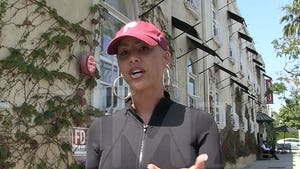
Amber Rose Says She's Still Voting For Donald Trump After Felony Conviction

Mavericks Vs. Celtics NBA Finals WAGs ... Who Will Be The Champs?!
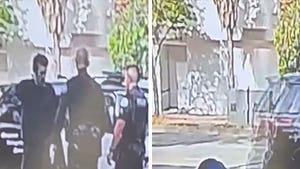
L.A. City Councilman Accuses Cops of Dumping Homeless Guy at His Office
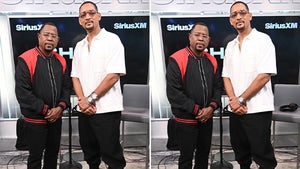
What's the Big Frigin' Difference?!

Diddy's Honorary Degree From Howard Revoked Over Cassie Beating Video
Bill maher drills down on 'star trek's controversial interracial kiss, bill maher sits down with william shatner ... interracial kiss mystery solved.
Bill Maher tackled one of the most burning questions in the history of "Star Trek" Friday ... and thanks to William Shatner , we now have our answer!
The 'Real Time' host interviewed Shatner on his HBO show – and, at one point during their convo, Bill asked about the famous interracial kiss between Admiral James T. Kirk (white) and Lt. Nyota Uhura (Black).
Shatner, as Kirk, planted the lip smacker on Nichelle Nichols , as Uhura, in the 1968 Star Trek episode titled, "Plato's Stepchildren." The moment was very controversial because NBC – which aired "Star Trek" – was afraid of turning off their conservative Southern audience.
Network execs demanded the two actors never lock lips while they shot the scene, using instead a technique to suggest they were kissing by turning their heads away from the camera. But that's not how it went down in the end.
Bill dove into all the drama, first commending Shatner for being "brave about it" because Southern TV stations canceled programs that attempted to promote interracial relationships.
At first, Shatner made light of the situation, saying he puckered his lips before shaping his mouth into a fish for the laughing crowd.
Then he got a bit more serious, explaining that Nichelle – who died in 2022 – was a beautiful woman "in her lifetime."
Bill then turned to the big question ... Would the kiss have appeared in the scene if Shatner had not insisted on doing it?
Shatner didn't miss a beat, replying, "It would have not got done."
Bill heartily applauded along with the audience, acknowledging Shatner's boldness in breaking barriers during that period.
Mystery solved!
- Share on Facebook
related articles
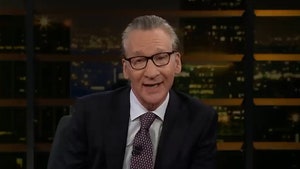
Bill Maher Blasts COVID Pandemic Overreaction

'Star Trek' & 'Captain Marvel' Actor Kenneth Mitchell Dead at 49
Old news is old news be first.

Did Gene Roddenberry Try to Have a Gay Character on the Original Star Trek?
- Rod Roddenberry believes his father would support LGBTQ+ characters on Star Trek now.
- Gene Roddenberry's views on LGBTQ+ characters evolved over the years for the better.
- Roddenberry, pre-Stonewall, was not considering LGBTQ+ characters on Star Trek in the 1960s.
TV LEGEND : Gene Roddenberry tried to have an LGBTQ+ character on the original Star Trek series.
A few years back, there was a bit of a controversy when George Takei, who played Lt. Sulu on the original Star Trek TV series from 1966-1969, criticized the decision of the Star Trek film reboot to have the Sulu in the film series (which was set in an alternate timeline where Captain James T. Kirk and his crew took over the Enterprise earlier than in the original timeline) be gay. Takei argued, "I’m delighted that there’s a gay character. Unfortunately, it’s a twisting of Gene’s creation, to which he put in so much thought . I think it’s really unfortunate." Takei felt that since Sulu was intended to be straight by Roddenberry on the original Star Trek series, that it would be wrong to have him be gay in the new timeline. Takei urged the filmmakers to create a new character instead.
Rod Roddenberry, Gene Roddenberry's son (Roddenberry died in 1991), noted at the time , in reference to his father, "I think he would be 100 percent in favor of a gay character in Star Trek. There’s so much going on in the world today. I think he would love any sort of social issue being brought into Star Trek. ”
Roddenberry is almost certainly correct that his father would have been in favor of there being a gay character on Star Trek now, but I think there has been some confusion as to Roddenberry's thoughts on the topic when it came to the original series. Essentially, Roddenberry has been positioned by some fans as someone who wanted to do an episode with LGBTQ+ characters in the 1960s, but just wasn't allowed to do so. Was that the case?

One Early Jennifer Aniston TV Show Killed the Cast Repeatedly
In the latest TV Legends Revealed, discover the TV series that repeatedly "killed off" Jennifer Aniston and the rest of her cast
What has George Takei said about asking Gene Roddenberry for an LGBTQ+ character on Star Trek?
George Takei, in a PBS interview , told the story of a time in 1968 when he tried to pitch Roddenberry on doing an LGBTQ+ character on Star Trek:
“I did very privately bring up the issue of gays and lesbians. And he was certainly, as a sophisticated man, mindful of that, but he said – in one episode we had a biracial kiss, Captain Kirk and Uhura had a kiss. That show was literally blacked out in the south, Louisiana, Alabama, Mississippi, Georgia didn't air that; our ratings plummeted. It was the lowest rated episode that we had. And he said, “I'm treading a fine tight wire here. I'm dealing with issues of the time. I'm dealing with the civil rights movement, the Vietnam War, the Cold War and I need to be able to make that statement by staying on the air.” He said, “If I dealt with that issue I wouldn't be able to deal with any issue because I would be canceled.”
Takei continued, "And I understood that because I was still closeted at that time. I talked to him as a liberal rather than as a gay man and I understood his position on that. So that's the way Star Trek envisioned our future in the 23rd century, but I think we're getting closer to that utopian society that Gene Roddenberry visualized, much more rapidly than even the technology.”
The interesting thing about the network, at the time, is that it specifically ASKED its producers to find roles for Black actors, sending out a memo ( courtesy of FactTrek ) stating, "We urge producers to cast Negroes, subject to their availability and competence as performers, as people who are an integral segment of the population, as well as in those roles where the fact of their minority status is of significance. An earnest attempt has been made to see that their presence contributes to an honest and natural reflection of places, situations and events, and we desire to intensify and extend this effort."
In other words, casting a regular Black character or a regular Asian character was, while certainly admirable by Roddenberry, not something that the network even had a problem with at that point in time. Having an LGBTQ+ regular character, though, wasn't even in the realm of possibility in 1968 for a network TV series. In other words, Roddenberry might very well have been mindful of Takei's concern at the time, but there was no way he was ever seriously considering having an LGBTQ+ character on the series.
Why Did Matthew McConaughey Get Sued Over His Texas Chainsaw Massacre Movie?
In the latest Movie Legends Revealed, learn the bizarre story behind Matthew McConaughey being sued over his Texas Chainsaw Massacre film appearance
What did Gene Roddenberry say about his interest in having LGBTQ+ characters in Star Trek?
In a great 1991 interview with David Alexander , Roddenberry discussed how his views had changed over the years, and he specifically offered up that his views on LGBTQ+ people had evolved for the better:
I n the early 1960s, I was much more a macho-type person. I was still accepting things from my childhood as necessary and part of reality how men related to women, et cetera. My assistant, Susan Sackett, used to say to me, "You really put down women a lot for someone who is supposed to be thoughtful and liberal." I began listening to her and agreeing that she was right in her perceptions. My attitude toward homosexuality has changed. I came to the conclusion that I was wrong. I was never someone who hunted down "fags" as we used to call them on the street. I would, sometimes, say something anti-homosexual off the top of my head because it was thought, in those days, to be funny. I never really deeply believed those comments, but I gave the impression of being thoughtless in these areas. I have, over many years, changed my attitude about gay men and women.
Again, by the launch of Star Trek: The Next Generation , Roddenberry was a different person, and society was thankfully different (David Gerrold has noted a number of times that Roddenberry specifically said circa 1986 that there WOULD be gay crew members on the Enterprise in The Next Generation ), and it is VERY likely that, had Roddenberry lived, he would have made sure that there was an LGBTQ+ character on The Next Generation . Sadly, he died before that could ever happen.
However, there was no way that he was ever even considering having an LGBTQ+ character on Star Trek in the late 1960s, pre-Stonewall. Roddenberry was certainly ahead of his time in many ways, but this after the fact portrayal of him as a guy titling at windmills in the pursuit of progressive ideals doesn't fit the reality of the late 1960s. He certainly did what he could, and he should be praised for doing so, but he wasn't trying to have LGBTQ+ characters on his network science fiction TV series in 1968.
The legend is...
STATUS : False enough for a false (there's some gray area when it comes to "I'd like to do that, but I can't")
Be sure to check out my archive of TV Legends Revealed for more urban legends about the world of TV. Click here for more legends specifically about Star Trek.
Feel free (heck, I implore you!) to write in with your suggestions for future installments! My e-mail address is [email protected]

Sparking STEM dreams: From 'Star Trek' to Neil deGrasse Tyson, minorities find inspiration
Ronald Gamble still remembers sitting up with his mother in the 1960s to watch the exploits of Captain James T. Kirk, Spock and Lt. Uhura on TV's groundbreaking "Star Trek."
“She was a big Trekkie,” Gamble, a theoretical astrophysicist at NASA’s Goddard Space Flight Center, said of his mom and a show with barrier-busting messages of unity and mission-driven science.
Uhura — who even once helmed the conn on the animated version of Star Trek — may have been one of the first major visualizations depicting Black people working and solving problems in the future, but she’s not alone.
In the decades since "Star Trek," a number of figures — both real and fictional — have inspired Black people to join science and engineering work fields.
One of the most prominent real-life figures, Black or white, in astrophysicsis is Neil deGrasse Tyson, the 65-year-old astrophysicist and author who appears across media talking on everything from black holes to the possibility of life on other planets.
Tyson, who one day may talk about the rings of Saturn and the next give a shout out to hip-hop, remains a staple on science shows, cable news and in movies.
One of his mentors, prominent author and astronomer Carl Sagan, once chided Hollywood directors for movies like the first "Star Wars," taking them to task over their early failure to depict alien life of all kinds, with no Blacks and other minorities in its fictional universes.
Nearly 30 years later, a plethora of books, movies and videogames depict Black explorers and Black warriors tackling galactic-sized issues in movies like " Black Panther," "Captain Marvel," the Star Wars sequels and blockbusters like the zombie-packed "I Am Legend" and the sci-fi mind-twister, "Tenet."
One of the defining trends depicting Black representation in the science and technology-themed fields of art, literature and movies is Afrofuturism, the cultural movement that combines the Black experience with science and pop culture.
Author Octavia Butler, whose work "Kindred," about a protagonist time traveling to the days of slavery, was adopted for a movie recently, is frequently cited as an influence. Gamble, an established oil painter, graphic designer and consultant, points out that part of making science and STEM-related fields accessible is making them relatable the way Star Trek and other pop culture figures do.
In recent years, groups like Black in Astro, Gamble’s Cosmic Pathfinders Program or podcasts like the Dr. Raven the Science Maven have raised the consciousness of those interested in learning the trappings of space and science.
"The plan is to remove the barriers," Gamble said.
J.D. Gallop is a criminal justice/breaking news reporter at FLORIDA TODAY. Contact Gallop at 321-917-4641 or [email protected]. X, formerly known as Twitter: @JDGallop.

Suggested Searches
- Climate Change
- Expedition 64
- Mars perseverance
- SpaceX Crew-2
- International Space Station
- View All Topics A-Z
Humans in Space
Earth & climate, the solar system, the universe, aeronautics, learning resources, news & events.

NASA, Global Astronomers Await Rare Nova Explosion

NASA Scientists Take to the Seas to Study Air Quality

NASA to Change How It Points Hubble Space Telescope
- Search All NASA Missions
- A to Z List of Missions
- Upcoming Launches and Landings
- Spaceships and Rockets
- Communicating with Missions
- James Webb Space Telescope
- Hubble Space Telescope
- Why Go to Space
- Commercial Space
- Destinations
- Living in Space
- Explore Earth Science
- Earth, Our Planet
- Earth Science in Action
- Earth Multimedia
- Earth Science Researchers
- Pluto & Dwarf Planets
- Asteroids, Comets & Meteors
- The Kuiper Belt
- The Oort Cloud
- Skywatching
- The Search for Life in the Universe
- Black Holes
- The Big Bang
- Dark Energy & Dark Matter
- Earth Science
- Planetary Science
- Astrophysics & Space Science
- The Sun & Heliophysics
- Biological & Physical Sciences
- Lunar Science
- Citizen Science
- Astromaterials
- Aeronautics Research
- Human Space Travel Research
- Science in the Air
- NASA Aircraft
- Flight Innovation
- Supersonic Flight
- Air Traffic Solutions
- Green Aviation Tech
- Drones & You
- Technology Transfer & Spinoffs
- Space Travel Technology
- Technology Living in Space
- Manufacturing and Materials
- Science Instruments
- For Kids and Students
- For Educators
- For Colleges and Universities
- For Professionals
- Science for Everyone
- Requests for Exhibits, Artifacts, or Speakers
- STEM Engagement at NASA
- NASA's Impacts
- Centers and Facilities
- Directorates
- Organizations
- People of NASA
- Internships
- Our History
- Doing Business with NASA
- Get Involved
- Aeronáutica
- Ciencias Terrestres
- Sistema Solar
- All NASA News
- Video Series on NASA+
- Newsletters
- Social Media
- Media Resources
- Upcoming Launches & Landings
- Virtual Events
- Sounds and Ringtones
- Interactives
- STEM Multimedia
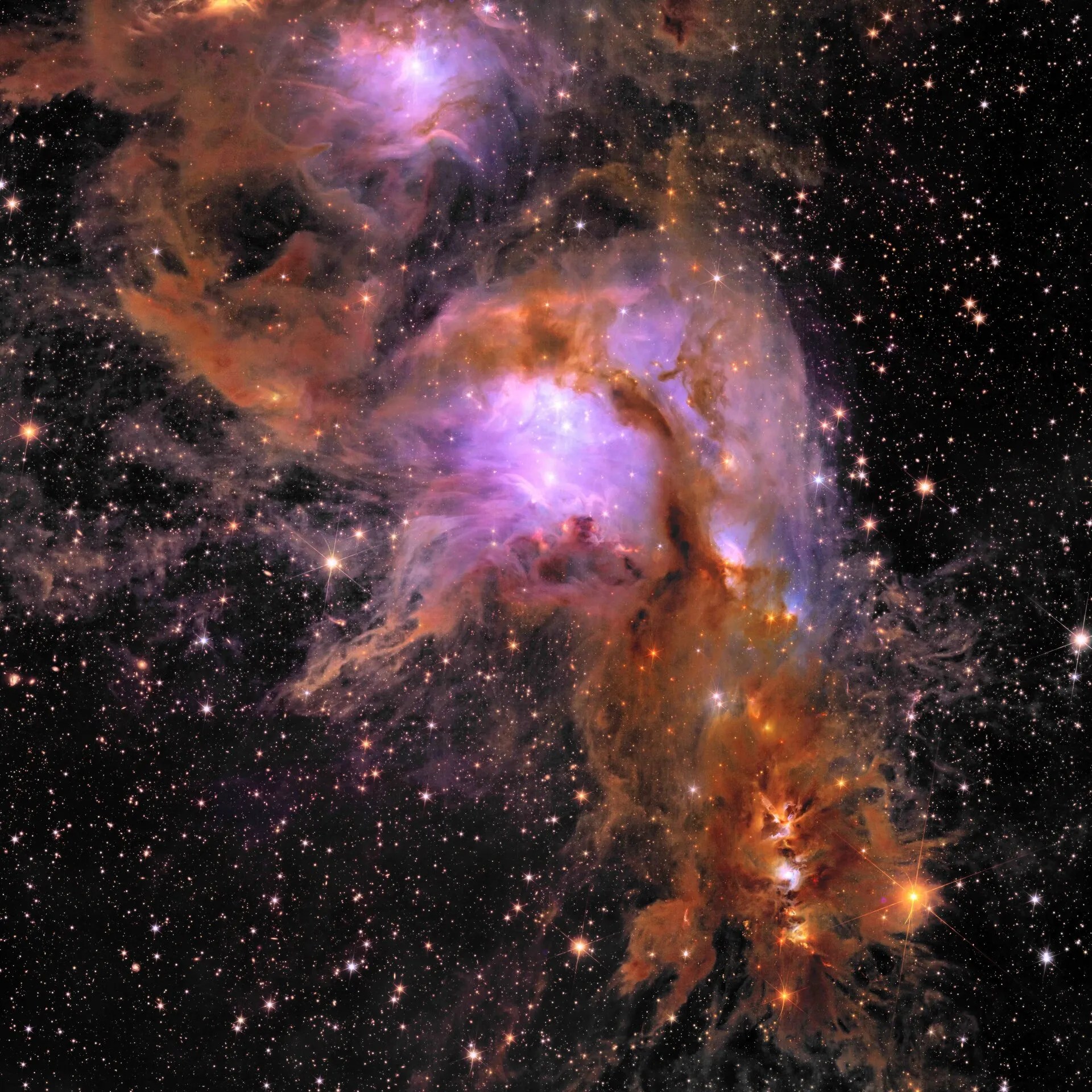
Amendment 19: D.18 Euclid General Investigator Program: Names must be omitted from References.

PACE Celebrates National Ocean Month With Colorful Views of the Planet
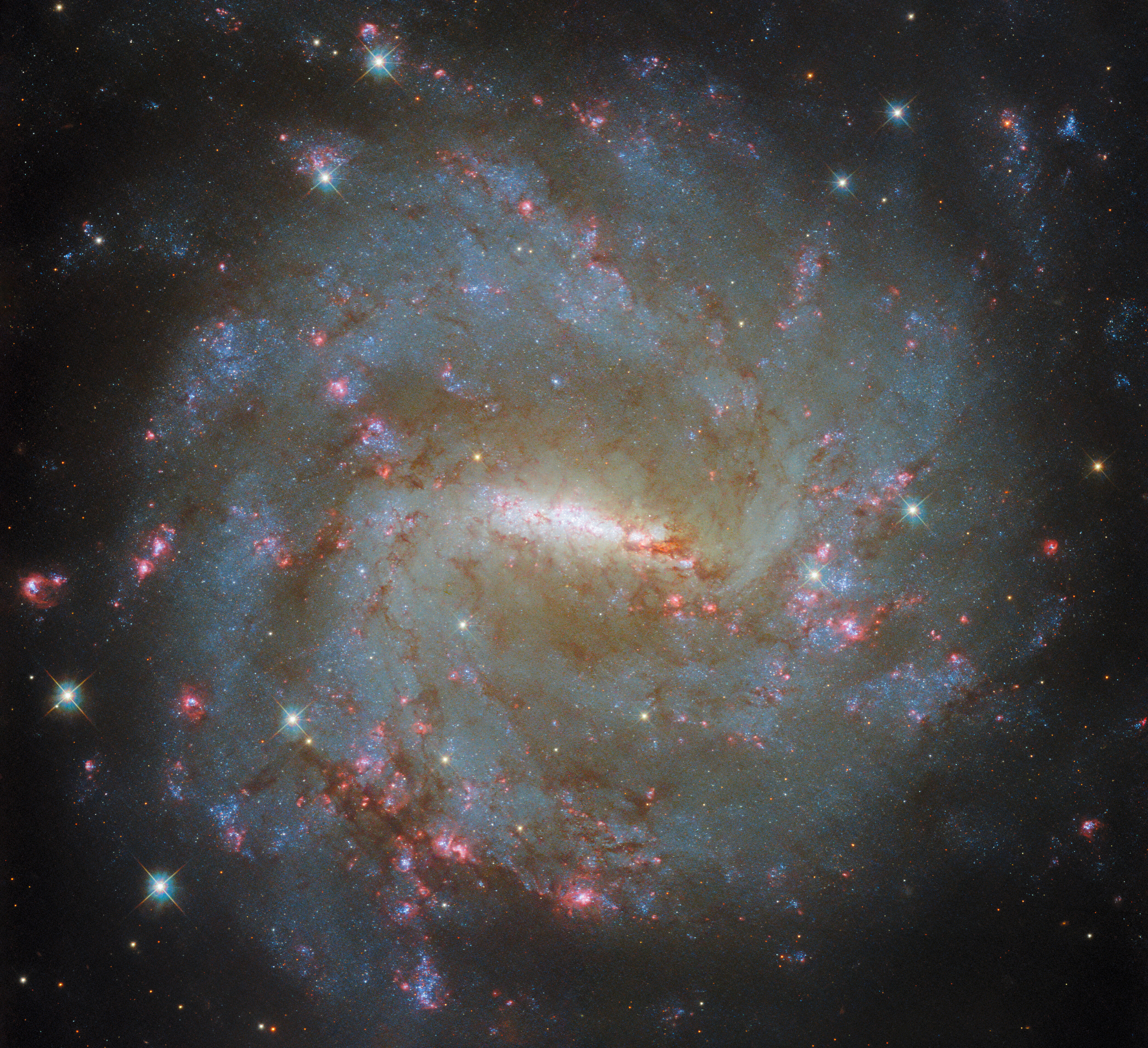
Hubble Examines a Barred Spiral’s Light

NASA Astronauts Practice Next Giant Leap for Artemis

Former Astronaut David R. Scott

Space Station Research Advances NASA’s Plans to Explore the Moon, Mars

NASA Mission Flies Over Arctic to Study Sea Ice Melt Causes

Webb Finds Plethora of Carbon Molecules Around Young Star

Solid State Quantum Magnetometers—Seeking out water worlds from the quantum world

C.12 Planetary Instrument Concepts for the Advancement of Solar System Observations POC Change

The Big Event, 2025

Black Hole Week

Amendment 20: F.20 MOSAICS Seed Funding formerly SMD Bridge Program Seed Funding Final Text.

ARMD Solicitations

Winners Announced in Gateways to Blue Skies Aeronautics Competition

NASA, Industry to Start Designing More Sustainable Jet Engine Core

B.10 Heliophysics Flight Opportunities Studies Correction

Tech Today: Measuring the Buzz, Hum, and Rattle

Artemis Generation Shines During NASA’s 2024 Lunabotics Challenge

NASA Marshall Engineer Receives AIAA Honors Award

Meet the Simunauts: Ohio State Students to Test Space Food Solutions for NASA

Diez maneras en que los estudiantes pueden prepararse para ser astronautas

Astronauta de la NASA Marcos Berríos

Resultados científicos revolucionarios en la estación espacial de 2023
15 min read
55 Years Ago: Star Trek Final Episode Airs, Relationship with NASA Endures
Johnson space center.
The voyages of the Starship Enterprise came to a sudden and premature end on June 3, 1969, with the airing of the final episode of the Star Trek original television series. Ironically, the show’s cancellation came just six weeks before humanity embarked on its first voyage to land on another celestial body. Although the show ran for only three seasons, it generated a devoted fan base disappointed by the cancellation despite their write-in campaign to keep it on the air. But as things turned out, over the decades Star Trek evolved into a global phenomenon, first with the original episodes replayed in syndication, followed by a series of full-length motion pictures, and eventually a multitude of spin-off series. With its primary focus on space exploration, along with themes of diversity, inclusion, and innovation, the Star Trek fictional universe formed a natural association with NASA’s real life activities.

Star Trek creator Gene Roddenberry first had the idea for a science fiction television series in 1964. He presented his idea, a show set in the 23 rd century aboard a starship with a crew dedicated to exploring the galaxy, to Desilu Productions, an independent television production company headed by Lucille Ball. They produced a pilot titled “The Cage,” selling it to the National Broadcasting Corporation (NBC) network that then bought a second pilot titled “Where No Man Has Gone Before.” NBC introduced the show to its fall 1966 lineup, with the first episode “The Man Trap” airing on Sep. 8. To put that date in perspective, NASA launched Gemini XI four days later, one of the missions that helped the agency achieve the Moon landing nearly three years later. Meanwhile, Star Trek’s Starship Enterprise continued its fictional five-year mission through the galaxy to “seek out new life and new civilizations.” The makeup of the Enterprise’s crew made the show particularly attractive to late 1960s television audiences. The major characters included an African American woman communications officer, an Asian American helmsman, and a half-human half-Vulcan science officer, later joined by a Russian-born ensign. While the show enjoyed good ratings during its first two seasons, cuts to its production budget resulted in lower quality episodes during its third season leading to lower ratings and, despite a concerted letter-writing campaign from its dedicated fans, eventual cancellation.

Despite the show’s cancellation, Star Trek lived on and prospered in syndication and attracted an ever-growing fan base, turning into a worldwide sensation. Often dubbed “trekkies,” these fans held the first of many Star Trek conventions in 1972. When in 1976 NASA announced that it would name its first space shuttle orbiter Constitution, in honor of its unveiling on the anniversary of the U. S. Constitution’s ratification, trekkies engaged in a dedicated letter writing campaign to have the orbiter named Enterprise, after the starship in the television series. This time the fans’ letter writing campaign succeeded. President Gerald R. Ford agreed with the trekkies and directed NASA to rechristen the first space shuttle. When on Sept. 17, 1976 , it rolled out of its manufacturing plant in Palmdale, California, appropriately accompanied by a band playing the show’s theme song, it bore the name Enterprise. Many of the original cast members of the show as well as its creator Rodenberry participated in the rollout ceremony, hosted by NASA Administrator James C. Fletcher . Thus began a lengthy relationship between the space agency and the Star Trek brand.
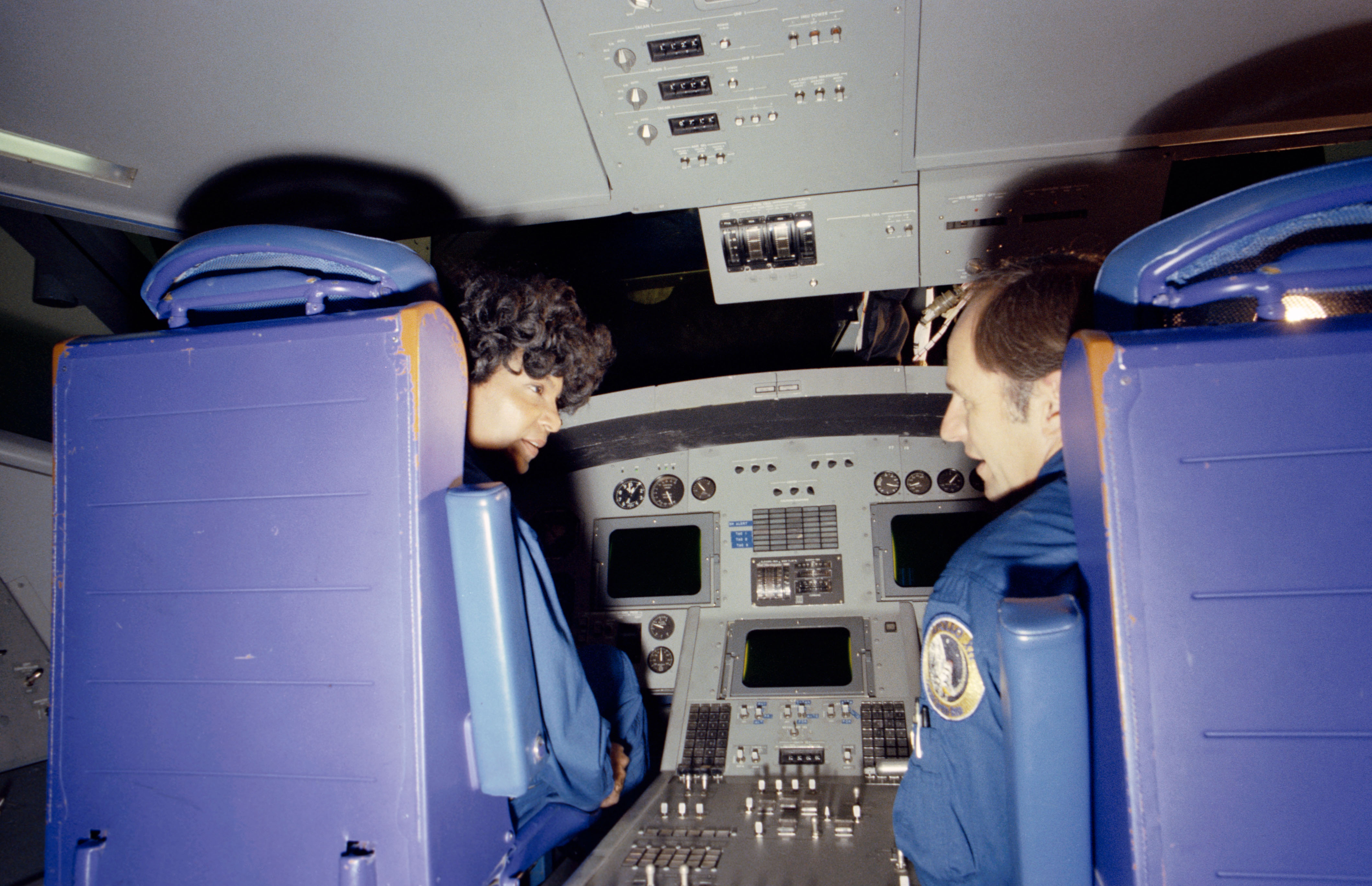
During the development of the space shuttle in the 1970s, the need arose to recruit a new group of astronauts to fly the vehicle, deploy the satellites, and perform the science experiments. When NASA released the call for the new astronaut selection on July 8, 1976, it specifically encouraged women and minorities to apply. To encourage those applicants, NASA chose Nichelle Nichols, who played communications officer Lt. Uhura on the Starship Enterprise, to record a recruiting video and speak to audiences nationwide. She came to NASA’s Johnson Space Center (JSC) in Houston in March 1977, and accompanied by Apollo 12 and Skylab 3 astronaut Alan L. Bean , toured the center and filmed scenes for the video in Mission Control and other facilities. NASA hoped that her stature and popularity would encourage women and minorities to apply, and indeed they did. In January 1978, when NASA announced the selection of 35 new astronauts from more than 8,000 applicants, for the first time the astronaut class included women and minorities. All distinguished themselves as NASA astronauts and paved the way for others in subsequent astronaut selections. Nichols returned to JSC in September 2010 with the Traveling Space Museum, an organization that partners with schools to promote space studies. She toured Mission Control and the International Space Station trainer accompanied by NASA astronaut B. Alvin Drew . She also flew aboard NASA’s Stratospheric Observatory for Infrared Astronomy (SOFIA) airborne telescope aircraft managed by NASA’s Ames Research Center in Silicon Valley, California, in September 2015.

Meanwhile, the Star Trek brand renewed itself in 1979 as a full-length motion picture with the original TV series cast members reprising their roles. Over the years, several sequels followed this first film. And on the small screen, a reboot of sorts occurred in 1987 with the premiere of Star Trek: The Next Generation, a new series set in the 24 th century aboard the Enterprise-D, a next generation starship with a new crew. That series lasted seven seasons, followed by a near-bewildering array of spin-off series, all built on the Star Trek brand, that continue to this day.

James Doohan, the actor who played Lt. Cmdr. Montgomery “Scotty” Scott, the Starship Enterprise’s chief engineer, had early associations with NASA. In April 1967, Doohan visited NASA’s Dryden (now Armstrong) Flight Research Center in California, spending time with NASA test pilot Bruce A. Peterson. A month later, Peterson barely survived a horrific crash of the experimental M2-F2 lifting body aircraft. He inspired the 1970s TV series The Six-Million Dollar Man, and the show’s opening credits include film of the crash. Doohan narrated a documentary film about the space shuttle released shortly before Columbia made its first flight in April 1981. In January 1991, Doohan visited JSC and with NASA astronaut Mario Runco (who sometimes went by the nickname “Spock”) toured the shuttle trainers, Mission Control, and tried his hand at operating the shuttle’s robotic arm in the Manipulator Development Facility. In a unique tribute, astronaut Neil A. Armstrong , the first person to step on the lunar surface , spoke at Doohan’s retirement in 2004, addressing him as “one old engineer to another.”
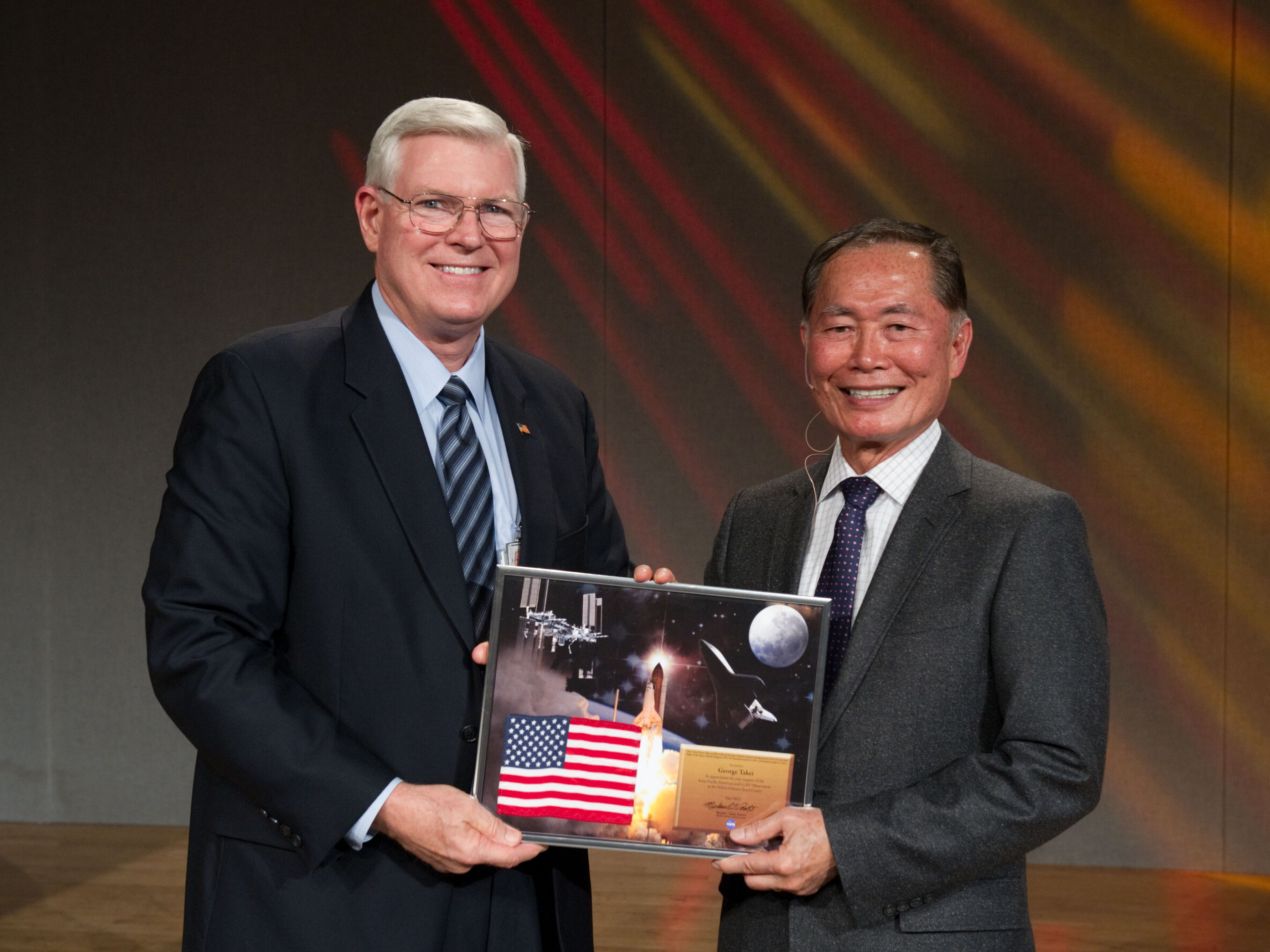
George Takei, who played Enterprise helmsman Lt. Hikaru Sulu, and his husband Brad, visited JSC in May 2012. Invited by both Asian American and LGBTQ+ Employee Resource Groups, Takei spoke of leadership and inclusiveness, including overcoming challenges while in Japanese American internment camps during World War II and as a member of the LGBTQ+ community. He noted that Star Trek remained ahead of its time in creating a future when all members of society could equally participate in great undertakings, at a time when the country struggled through the Civil Rights movement and the conflict in Southeast Asia. The inclusiveness that is part of NASA’s culture greatly inspired him. JSC Director Michael L. Coats presented Takei with a plaque including a U.S. flag flown aboard space shuttle Atlantis’ STS-135 mission. He also visited Mission Control and spent some time with Robonaut.
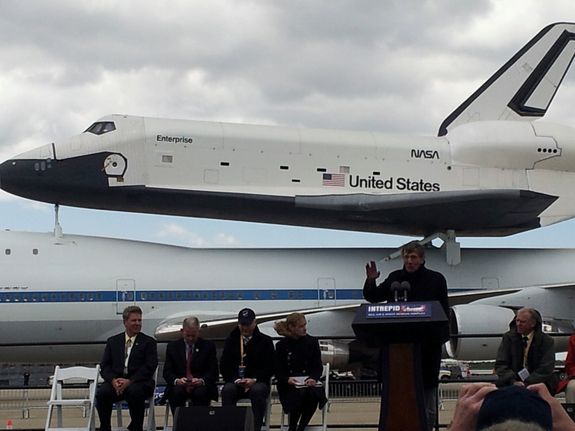
Leonard Nimoy played the science officer aboard the Starship Enterprise, the half-human, half-Vulcan Mr. Spock. The actor watched in September 2012 when space shuttle Enterprise arrived at John F. Kennedy International Airport in New York, on the last leg of its journey to the Intrepid Sea, Air and Space Museum, where it currently resides. “This is a reunion for me,” observed Nimoy. “Thirty-five years ago, I met the Enterprise for the first time.” As noted earlier, the Star Trek cast attended the first space shuttle’s rollout in 1976. Following his death in 2015, European Space Agency astronaut Samantha Cristoforetti paid tribute to Nimoy aboard the International Space Station by wearing a Star Trek science officer uniform, giving the Vulcan greeting, and proclaiming, “Of all the souls I have encountered … his was the most human.”
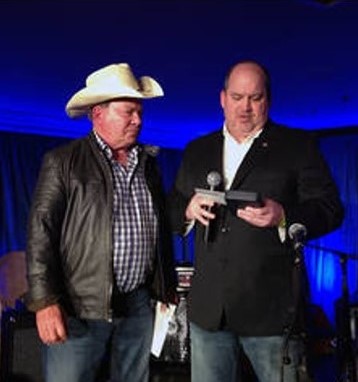
Captain James T. Kirk, played by actor William Shatner, a life-long advocate of science and space exploration, served at the helm of the Starship Enterprise. His relationship with NASA began during the original series, with references to the space agency incorporated into several story lines. In 2011, Shatner hosted and narrated a NASA documentary celebrating the 30 th anniversary of the Space Shuttle program , and gave his time and voice to other NASA documentaries. NASA recognized Shatner’s contributions in 2014 with a Distinguished Public Service Medal , the highest award NASA bestows on non-government individuals. NASA Deputy Associate Administrator for Communications Robert “Bob” N. Jacobs presented the medal to Shatner. The award’s citation read, “For outstanding generosity and dedication to inspiring new generations of explorers around the world, and for unwavering support for NASA and its missions of discovery.” In 2019, Shatner narrated the NASA video We Are Going , about NASA’s plans to return astronauts to the Moon. He has spoken at numerous NASA-themed events and moderated panels about NASA’s future plans. On Oct. 13, 2021, at the age of 90, Shatner reached the edge of space during the NS-18 suborbital flight of Blue Origin’s New Shepard vehicle, experiencing three minutes of weightlessness.
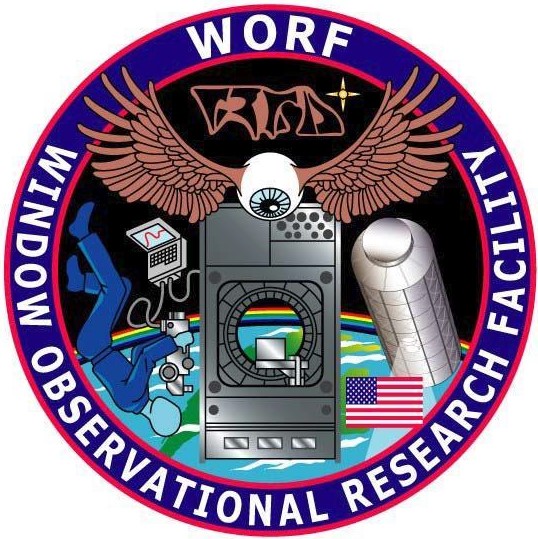
Elements of the Star Trek universe have made their way not only into popular culture but also into NASA culture. As noted above, Star Trek fans had a hand in naming the first space shuttle Enterprise. NASA’s Earth observation facility aboard the space station that makes use of its optical quality window bears the name the Window Observational Research Facility (WORF). The connection between that acronym and the name of a Klingon officer aboard the Enterprise in the Star Trek: The Next Generation TV series seemed like an opportunity not to be missed – the facility’s official patch bears its name in English and in Klingon. Several astronaut crews have embraced Star Trek themes for their unofficial photographs. The STS-54 crew dressed in the uniforms of Starship Enterprise officers from Star Trek II: The Wrath of Kahn, the second full-length feature motion picture of the series. Space shuttle and space station crews created Space Flight Awareness (SFA) posters for their missions, and more than one embraced Star Trek themes. The Expedition 21 crew dressed in uniforms from the original series, while the STS-134 crew chose as their motif the 2009 reboot motion picture Star Trek.
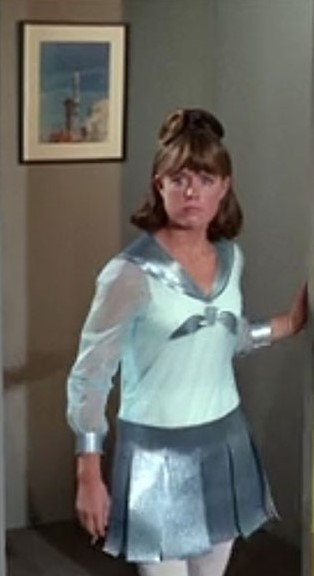
As much as Star Trek has influenced NASA, in turn the agency has left its mark on the franchise, from episodes referencing actual and future spaceflight events to NASA astronauts making cameo appearances on the show. The first-season episode “Court Martial” that aired in February 1967 featured a photograph of the December 1965 Gemini VI launch adorning a wall aboard a star base. In the second-season episode “Return to Tomorrow,” airing in February 1968, Captain Kirk in a dialogue about risk-taking remarks, “Do you wish that the first Apollo mission hadn’t reached the Moon?” a prescient reference to the first Apollo mission to reach the Moon more than 10 months after the episode aired. Astronaut Mae C. Jemison , who credits Nichelle Nichols as her inspiration to become an astronaut, appeared in the 1993 episode “Second Chances” of Star Trek: The Next Generation , eight months after her actual spaceflight aboard space shuttle Endeavour. In May 2005, two other NASA astronauts, Terry W. Virts and E. Michael Fincke , appeared in “These are the Voyages…,” the final episode of the series Star Trek: Enterprise.
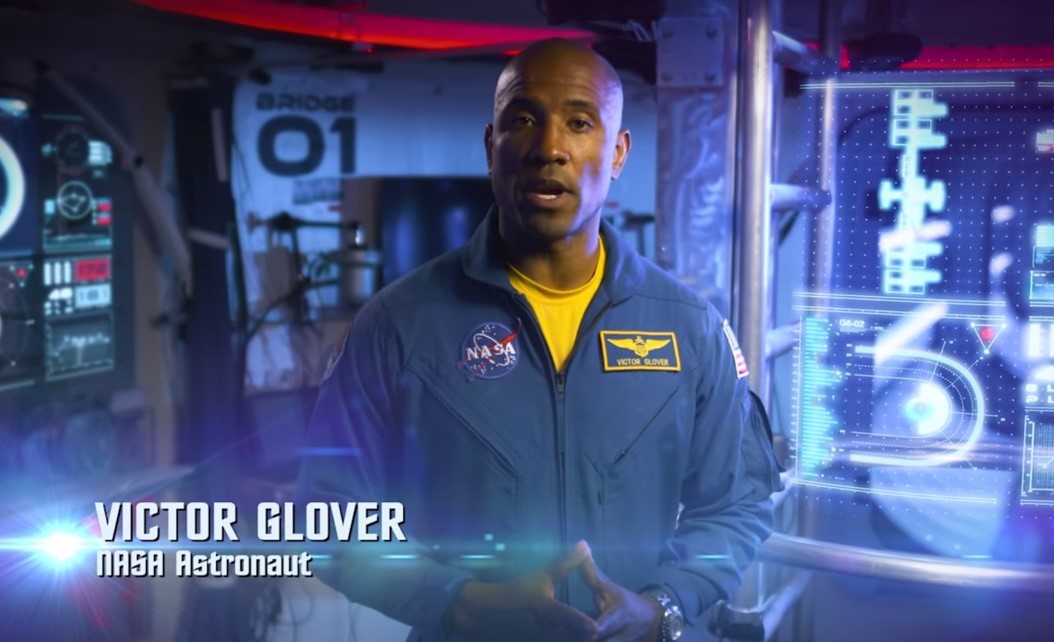
In the 2016 documentary “ NASA on the Edge of Forever: Science in Space ,” host NASA astronaut Victor J. Glover states, “Science and Star Trek go hand-in-hand.” The film explores how for 50 years, Star Trek influenced scientists, engineers, and even astronauts to reach beyond their potential. While the space station doesn’t speed through the galaxy like the Starship Enterprise, much of the research conducted aboard the orbiting facility can make the fiction of Star Trek come a little closer to reality. Several of the cast members from the original TV series share their viewpoints in the documentary, along with those of NASA managers and scientists. Over the years, NASA has created several videos highlighting the relationship between the agency and the Star Trek franchise. In 2016, NASA Administrator Charles F. Bolden led a video tribute to celebrate the 50 th anniversary of the first Star Trek episode.
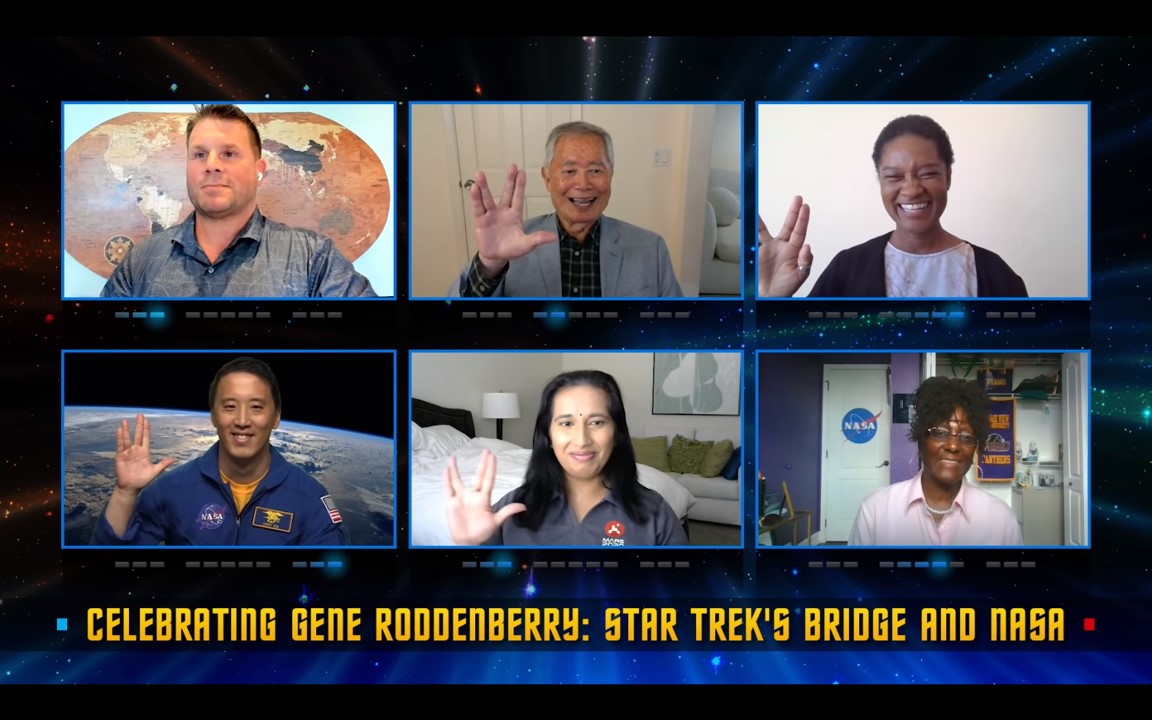
In 2021, on the 100 th anniversary of Gene Roddenberry’s birth, his son Rod hosted a virtual panel discussion , introduced by NASA Administrator C. William “Bill” Nelson , about diversity and inspiration, two ideals the Star Trek creator infused into the series. Panelists included Star Trek actor Takei, Tracy D. Drain, flight systems engineer for the Europa Clipper spacecraft at NASA’s Jet Propulsion Laboratory (JPL) in Pasadena, California, NASA astronaut Jonny Kim , Swati Mohan, guidance and operations lead for the Mars 2020 rover at JPL, and Hortense B. Diggs, Director of the Office of Communication and Public Engagement at NASA’s Kennedy Space Center in Florida.
The mutual attraction between NASA and Star Trek stems from, to paraphrase the opening voiceover from the TV series, that both seek to explore and discover new worlds, and to boldly go where no one has gone before. The diversity, inclusion, and inspiration involved in these endeavors ensure that they will live long and prosper.
Explore More
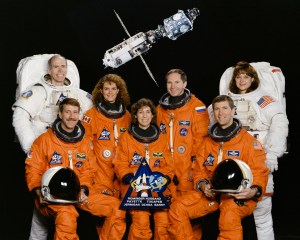
25 Years Ago: STS-96 Resupplies the Space Station

15 Years Ago: First Time all Partners Represented aboard the International Space Station
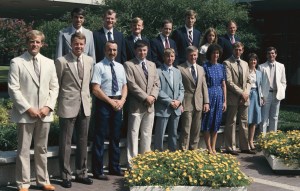
40 Years Ago: NASA Selects its 10th Group of Astronauts
Den of Geek
The Star Trek Original Series Cast’s Best Non-Star Trek Roles
The cast of The Original Series went far beyond the Star Trek frontier.

- Share on Facebook (opens in a new tab)
- Share on Twitter (opens in a new tab)
- Share on Linkedin (opens in a new tab)
- Share on email (opens in a new tab)
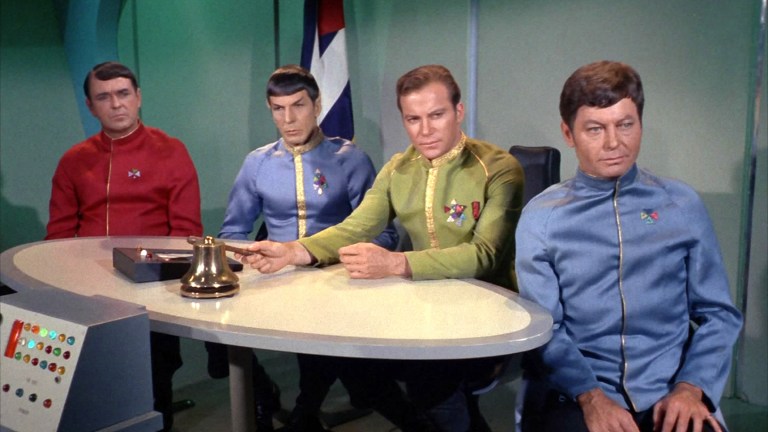
William Shatner. Leonard Nimoy. Nichelle Nichols. These names belong to some of the most influential actors in television history, but they are almost interchangeable with the names James T. Kirk, Mr. Spock, and Uhura. For better or for worse, these names and faces are inextricably tied to the characters they played.
That said, anyone who only knows the cast of Star Trek ’s original series as the command crew of the USS Enterprise is missing out on some pretty fantastic acting work elsewhere. Every member of the cast had credits before the first season in 1966, and they all went on to other projects after the show’s cancelation in 1969, even as they reconvened for the feature films . If you don’t want to sift through hours of Westerns and police procedurals, here is a cheat sheet to the best non- Trek performances from the stars of The Original Series .
William Shatner as Denny Crane in Boston Legal (2004 – 2008)
As much as comedians love to mock him for his over-the-top line deliveries, no one gets the comedic potential of William Shatner better than William Shatner. Even as Kirk, Shatner got to show off his comic chops from time to time (“No, no, I’m from Iowa, I only work in outer space”). Several movies and series have used Shatner’s silly side to great effect, including an infamous Saturday Night Live episode.
Shatner put his comedic and dramatic skills to use in The Practice spin-off Boston Legal , where he played Denny Crane, the uncouth and powerful partner of the central law firm. Shatner’s outrageous approach is on full display in the season five episode “Dances With Wolves,” in which Crane stood trial for shooting a mugger. Throughout the episode, Crane does everything from tote several guns to every form of overt sexism, but Shatner’s comfort with big characters allowed him to sell an outrageous person without breaking the reality of the series.
Ad – content continues below
Leonard Nimoy as Dr. David Kibner in Invasion of the Body Snatchers (1978)
All Trek actors struggled with typecasting, but none so much as Leonard Nimoy , who spent a lot of time resisting and (frankly) resenting Mr. Spock for overshadowing his identity. Thus, many of his roles in the years following the cancelation of Star Trek took him far away from the logical Vulcan. The most striking and successful of those revisions occurred in the first remake of Invasion of the Body Snatchers in 1978.
Of course, there’s something inherently funny about seeing Nimoy play the touchy-feely self-help guru Dr. Kribner. In the same way that he casts Robert Duvall as a priest who stares at the camera for a brief and wordless cameo, Body Snatchers director Philip Kaufman uses our recognition of a popular actor to disrupt us. When Kibner ends a conversation about a scared woman’s feelings by initiating a hug, we viewers shudder at the uncanny sight. Even if we know that Nimoy isn’t Mr. Spock, especially not in this scene, it still feels wrong — and that’s the entire point.
DeForest Kelly as Morgan Earp in Gunfight at the O.K. Corral (1957)
Gene Roddenberry famously pitched Star Trek as “ Wagon Train to the Stars,” so it makes sense that he would cast a veteran of Westerns to play crusty old doctor Bones McCoy. Before enlisting in the Enterprise, DeForest Kelly spent a lot of time on the frontier, appearing in Westerns on the big and small screens. In addition to film noirs like Fear in the Night and Canyon City , Kelly put in turns on The Lone Ranger and Tales of Wells Fargo , playing rugged characters doing their best to stay alive in the Old West.
Kelly’s most notable role came as Morgan Earp, brother of Sheriff Wyatt Earp in the 1957 film version of Gunfight at the O.K. Corral . Directed by John Sturges and starring Burt Lancaster as Wyatt Earp and Kirk Douglas as Doc Holiday, Gunfight at the O.K. Corral was a hit among moviegoers, even if critics dismissed it as silly. Kelly brings a paternal air to the film, which might surprise some Trekkies, but that only speaks to the TV doctor’s impressive range.
James Doohan as Damon Warwick in The Bold and the Beautiful (1996 – 1997)
Doohan arguably struggled more than any of his cast mates after Trek , as no one wanted to see him as anything other than lovable engineer Scotty. He often appeared as himself or as a variation of Mr. Scott, as in the Duckman episode “Where No Duckman Has Gone Before.” But the Canadian actor did find a home, at least for a little while, away from deep space on the soap opera The Bold and the Beautiful .
As the father of Dr. James Warwick ( Ian Buchanan , aka Dick Tremayne on Twin Peaks ), Doohan didn’t get much to do other than torment his psychiatrist’s son with a faked death. However, the reconciliation between James and Damon gave Doohan a chance to play some emotional beats rarely seen in the engineering room of the USS Enterprise. Although Doohan has since passed, James Warwick remains an ongoing character in The Bold and the Beautiful (albeit one who has not appeared since 2017), keeping alive Doohan’s non- Trek legacy.
Nichelle Nichols as Lucinda Winters in The Young and the Restless (2016)
Like her friend Doohan, Nichelle Nichols found her greatest non- Trek achievement in the world of soap operas. Nichols came to Trek with fewer credits than many of her co-stars, and she struggled again after the series’ cancelation. For some time, her most notable part came in the 1974 Blaxploitation film Truck Turner starring Isaac Hayes. But late in life, Nichols finally got the chance to show off her full acting abilities away from the control bridge, when she played Lucinda Winters on The Young and the Restless .
Get the best of Den of Geek delivered right to your inbox!
Lucinda entered the series late in the arc of Neil Winters (Kristoff St. John), a character who saw plenty of drama in his 28-year tenure on the show. Like Doohan’s Damon Warwick, Lucinda Winters appeared after a long estrangement from her son, opening up old wounds. But unlike her co-star’s imperious character, Neil Winters worked to heal those wounds, giving her son some peace before her death. Nichols shone as a matronly woman with a complicated past, earning an Emmy nomination for Best Guest Performer in a Drama.
George Takei as Arthur Takamori in The Twilight Zone, “The Encounter” (1964)
Unsurprisingly, many TOS cast members appeared on The Twilight Zone , the highly influential sci-fi series from Rod Serling. But few members of the Enterprise crew appeared in an episode as good as “The Encounter,” which starred Neville Brand as World War II veteran Fenton and George Takei as Japanese American Arthur Takamori. Written by Martin M. Goldsmith and directed by Robert Butler, the episode addressed the anti-Japanese racism many Americans carried long after World War II.
The episode begins with only unspoken tensions, as the unpleasant Fenton listens to Arthur as he asks for work. But when Takamori takes hold of a sword with a magical incantation, he becomes possessed by a man Fenton murdered and seeks his revenge. In the tradition of the best Twilight Zone stories, “The Encounter” uses its fantastic concept to draw attention to a real-world issue, a difficult task at which the show succeeds thanks to Takei’s layered performance.
Walter Koenig – Alfred Bester in Babylon Five (2004 – 2008)
On Star Trek , Koenig played a hip Russian kid with a Beatles ‘do, a guy later best known for his inability to pronounce the word “vessels.” While that defining role did limit the parts offered to him, Koenig kept himself busy as a writer, penning scripts for Star Trek: The Animated Series and Land of the Lost , as well as the comic book series Raver . So it’s no surprise that Koenig would choose a sci-fi series to put in his best performance.
Created by J. Michael Straczynski, Babylon 5 shared more than a few elements with Star Trek . The series takes place on a space station where several different species must learn to live together, not unlike Deep Space Nine . But when Koenig strode onto the titular space station in the season one episode “Mind War,” he shook off any comparisons to Chekov without saying a word. As Psych-Cop Alfred Bester, Koenig had a chilly demeanor and a mysterious power that set him completely apart from the Enterprise’s navigator.

Joe George | @jageorgeii
Joe George’s writing has appeared at Slate, Polygon, Tor.com, and elsewhere!
Chris Pine’s Best Moment As Star Trek’s Captain Kirk Isn’t the One You Think

Your changes have been saved
Email Is sent
Please verify your email address.
You’ve reached your account maximum for followed topics.
The Big Picture
- Chris Pine's portrayal of James T. Kirk in Star Trek showcases a journey from selfishness to selflessness, reflecting growth and heroism.
- The film reboots the iconic sci-fi franchise with action-packed sequences and a new timeline that sets up the origins of Kirk and Spock's friendship. Pine's best moment as Captain Kirk is in the final sequence of the film where he and Spock work together to infiltrate the Narada .
- Pine brings sensitivity to Kirk's character, fulfilling his father's legacy and showcasing a vulnerability that highlights his heroic transition.
There really should not be a debate over who is Hollywood’s “Best Chris,” as Chris Pine has easily proven himself as an actor of real depth . Between his steely role in the neo-Western Hell or High Water and his charismatic romanticism as Steve Trevor in the Wonder Woman films, Pine has shown that he’s capable of standing out within talented ensembles. However, the challenges he faced when stepping into the role of James T. Kirk in the reboot of the Star Trek franchise were immeasurable. While William Shatner’s performance has been cited as the gold standard of overacting, Pine brought a surprising sensitivity and nuance to his role as the younger Captain Kirk.
The mythology of Star Trek is quite dense, but director J.J. Abrams' 2009 reboot serves as a great entry point for newcomers to the franchise. By taking place within an alternate universe known as the “Kelvin Timeline,” the new trilogy was able to forge a new direction and show the events leading up to the iconic episodes of Star Trek: The Original Series . Longtime fans may have struggled accepting a new actor in Shatner’s iconic role, but Pine gave Kirk a complete character arc during the action-packed conclusion of 2009’s Star Trek when he and Spock worked together to infiltrate the Narada.
Star Trek (2009)
J.J. Abrams' 2009 movie Star Trek rebooted the iconic sci-fi franchise in a totally new timeline. When a Romulan ship travels back in time and alters the past, the lives of James T. Kirk (Chris Pine), Spock (Zachary Quinto), and the future crew of the USS Enterprise are drastically changed. In this new timeline, the Romulan Nero (Eric Bana) sets out for revenge on Spock, setting off a chain of events that reshape the entire universe.
Chris Pine's Best Moment as Kirk Comes in 'Star Trek's Final Act
While the original Star Trek series took place in an established universe, the reboot film examines how Kirk rose from a humble background to become one of the bravest and most accomplished captains in the history of Starfleet . Bravery is always in his wheelhouse, but Kirk starts off the film as a selfish jerk who only uses Starfleet to advance his own ego. Kirk essentially decides to enlist in Starfleet Academy in order to win a bet with Captain Christopher Pike ( Bruce Greenwood ). Following this, he seems more interested in starting feuds with Spock ( Zachary Quinto ) and flirting with Lieutenant Uhura ( Zoe Saldaña ) than he is fulfilling the Prime Directive. However, a pivotal conversation with Spock Prime ( Leonard Nimoy ) indicates to Kirk that he has a greater legacy to fulfill.
Pine shows in Star Trek's conclusion that Kirk has grown more responsible. His mission is a critical one; the ruthless Romulan, Captain Nero ( Eric Bana ), has already destroyed the planet Vulcan, and is intent on leading an attack on Earth. While Pine has always done a great job at showing that Kirk has a keen sense of humor, his complexion grows far more grave when he informs his crew about the impending mission. Kirk realizes that everything he came from, including his family and friends on Earth, is at stake. It’s the first instance in the film where he develops a knack for heroism that is entirely selfless, and not out of a desperate attempt to prove himself worthy to the other characters.
What Happened to the 'Madame Web' Director's Star Trek Movie?
Why did S.J. Clarkson never enter the world of Tribbles and Gorns?
While the final sequence includes the type of kinetic action that is common in Abrams’ films , Star Trek shows how Pine’s Kirk has learned from his eclectic experiences . Kirk has spent a majority of the film sneaking around Starfleet facilities in order to solidify his place within the crew of the Enterprise ; it's fitting that his finest hour involves infiltrating an advanced spacecraft in a daring and heroic mission that doesn’t follow official protocols. Kirk’s final brawl with the ruthless Romulan villain Ayel ( Clifton Collins Jr. ) shows how his checkered past ends up benefiting him. Although he started the film getting into a bar brawl with haughty Starfleet officers, Kirk finally puts his nasty hand-to-hand combat skills to good use.
'Star Trek' Shows the Origin of Kirk’s Friendship With Spock
One of the most interesting revisions that 2009’s Star Trek makes to the core mythology of the franchise is positioning Kirk and Spock as rivals. Although the two eventually grow into close friends throughout the original series , Spock’s insistence on sticking to procedures initially rubs Kirk the wrong way. The ending of Star Trek teases the eventual bond that will develop between Kirk and Spock, as they are forced to work together in order to sneak aboard the Narada . Pine is more cheerful in his interactions, indicating that Kirk has taken Spock Prime’s words about their respective destinies to heart. As unlikely as it seems to him initially, he’s grown to accept the idea that he and Spock could be friends.
Although he makes a few jokes at his new ally’s expense, Pine shows that Kirk has come to acknowledge Spock’s feelings . Kirk has been so infuriated with Spock’s attitude that he has overlooked the fact that Vulcan has been destroyed; Spock lost much of his family and cultural heritage. Kirk is well-aware that Spock is half-human , and that Earth is the only planet he has left to call home. There’s a sensitivity to how Pine characterizes Kirk’s attitude; he recognizes the pain that Spock feels upon losing a parent, as it’s one that he knows all-too well.
Kirk Fulfills His Father’s Legacy at the End of 'Star Trek'
Star Trek begins with a harrowing opening sequence featuring Chris Hemsworth as Kirk’s father, George , who sacrifices himself in order to save the crew of the Kelvin from a Romulan attack. Pine gives Kirk the chance to mirror his father’s heroic action , as he goes into the mission with an acknowledgment that he could easily perish. Although the Romulans were responsible for his father’s death, Pine doesn’t turn Kirk into a vengeful character; rather, his heroic endeavors indicate that Kirk has learned to take pride in his family name.
2009’s Star Trek was a surprise hit at the box office , and spawned two direct sequels that faced Kirk off against even more ruthless villains . Pine turned Kirk into an empathetic hero whose vulnerability was an attribute; it was in Star Trek ’s finest hours that he made the steady transition into the hero fans knew he would become.
Star Trek is available to stream on Paramount+ in the U.S.
Watch on Paramount+
- Movie Features

IMAGES
VIDEO
COMMENTS
In the episode of Star Trek: The Original Series titled "Plato's Stepchildren", season 3 episode 10, first broadcast November 22, 1968, Uhura (played by black actress Nichelle Nichols) and Captain Kirk (played by white actor William Shatner) kiss. The episode is often cited as the first example of an interracial kiss on television.
Fifty years ago — only a year after the Supreme Court declared interracial marriage legal — two of science fiction's most enduring characters, Capt. James T. Kirk and Lt. Nyota Uhura, kissed ...
Season 3 Episode 10Production No. #067Episode: "Plato's Stepchildren"The Enterprise answers a distress call from Platonius, a planet populated by a small gro...
TV's first interracial kiss!Episode title: "Plato's Stepchildren"Season 3, Episode 10Air Date; November 22, 1968On an urgent medical emergency Kirk, Spock an...
On the fiftieth anniversary of the first broadcast of Star Trek, National Geographic noted the Kirk-Uhura kiss as "iconic", which they describe as connecting to the period's civil rights issues. In 2016, Radio Times ranked the kiss between Uhura and Kirk as the 25th best moment in all Star Trek.
Kirk and Uhura's kiss happens in Star Trek: The Original Series season 3, episode 10, "Plato's Stepchildren," an otherwise mediocre episode about halfway through TOS' final season. "Plato's Stepchildren" begins when the USS Enterprise answers a distress call from a people known as the Platonians. The Platonians possess telekinetic powers and ...
When Captain Kirk kissed Uhura on "Star Trek" in 1968, it was the first kiss between people of different races on television. "That was shocking," recalls George Takei, who played Lt. Sulu on the ...
But in 1968, Star Trek boldly took mixed-race kissing where U.S. TV had never gone before, with an episode in which Captain Kirk (William Shatner) planted one on Lieutenant Uhura (Nichelle Nichols).
50 years ago—November 22, 1968—NBC aired an otherwise-forgettable Star Trek episode with an unforgettable moment. Captain James Kirk and Lieutenant Uhura, under mind-control by aliens in a ...
The "Star Trek" kiss scene between Capt. Kirk and Lt. Uhura turns 50 this year.Learn more about this story at https://www.newsy.com/85545/Find more videos li...
Updated Feb 6, 2023 at 5:25pm. YouTube William Shatner as Captain Kirk and Nichelle Nichols as Lieutenant Uhura share a kiss in the "Star Trek" episode "Plato's Stepchildren". On November 22, 1968 ...
Published Aug 4, 2023. Star Trek's Kirk and Uhura shared the first high-profile interracial kiss on American TV, but only because William Shatner was particularly crafty. Star Trek: The Original Series is known for the interracial kiss shared between Captain James T. Kirk and Nyota Uhura. While that moment was not technically the first ...
Yet the famous kiss between Uhura and Kirk almost never happened. After the first season of "Star Trek" concluded in 1967, Nichols considered quitting after being offered a role on Broadway.
Star Trek's groundbreaking interracial kiss between Kirk and Uhura was 50 years ago today - how have public attitudes to interracial and interethnic relationships changed in the years since?
Captain Kirk is actor William Shatner's most recognizable and iconic role played throughout his seven-decade career. In StarTrek, he starred alongside Nichelle Nichols, who played Lieutenant Uhura, and the pair shared one of the greatest moments in television history: one of the first interracial kisses aired on American television.The episode was titled "Plato's Stepchildren," but in ...
WASHINGTON — It was the kiss heard around the galaxy. Fifty years ago — and only one year after the U.S. Supreme Court declared interracial marriage was legal — two of science fiction's most enduring characters, Captain James T. Kirk and Lieutenant Nyota Uhura, kissed each other on "Star Trek."
In fact, Strange New Worlds might feature the first instance of Uhura calling Kirk by his first name. Also, despite the infamous "first interracial kiss" moment, Star Trek never put those two characters together romantically. Even though he probably was "hitting on her" when introducing himself, Kirk quickly shifted his approach to being her ...
Published Jun 4, 2021. Although it was almost between Spock and Uhura instead of Kirk, Star Trek's groundbreaking 1968 kiss almost didn't happen at all. The amount of ink used to describe the many ways the original Star Trek series broke new ground could fill a swimming pool. By far, its most landmark moment, and a critical turning point for ...
50 years ago, Star Trek 's history was sealed with the Uhura-Kirk kiss. "She's the definition of Hollywood royalty for me," Thompson told Ars. "How she carries herself, how she treats others ...
Nyota Uhura (/ n i ˈ oʊ t ə ʊ ˈ h ʊr ə /), or simply Uhura, is a fictional character in the Star Trek franchise. In the original television series, the character was portrayed by Nichelle Nichols, who reprised the role for the first six Star Trek feature films.A younger Uhura is portrayed by Celia Rose Gooding in the 2022 prequel series Star Trek: Strange New Worlds, while an alternate ...
Shatner, as Kirk, planted the lip smacker on Nichelle Nichols, as Uhura, in the 1968 Star Trek episode titled, "Plato's Stepchildren." The moment was very controversial because NBC - which aired ...
The kiss between Captain Kirk and Uhura in Star Trek was first intended to be a kiss between Uhura and Spock. As fans probably remember from watching the episode, that kiss did not happen. William ...
A few years back, there was a bit of a controversy when George Takei, who played Lt. Sulu on the original Star Trek TV series from 1966-1969, criticized the decision of the Star Trek film reboot ...
Kirk and Uhura talking about "sabotage," could be a sly reference to all the interesting ways Willam Shatner pronounced this word in The Original Series. In some cases, it sounds like he's ...
At a local bar, Iowa boy Jim Kirk meets Cadet Uhura which then leads to a fight among other 'Star Fleet' cadets. 'Star Trek'; A film by J.J. Abrams.Starring...
Ronald Gamble still remembers sitting up with his mother in the 1960s to watch the exploits of Captain James T. Kirk, Spock and Lt. Uhura on TV's groundbreaking "Star Trek." "She was a big ...
The voyages of the Starship Enterprise came to a sudden and premature end on June 3, 1969, with the airing of the final episode of the Star Trek original television series. Ironically, the show's cancellation came just six weeks before humanity embarked on its first voyage to land on another celestial body. Although the show ran for only ...
The cast of The Original Series went far beyond the Star Trek frontier. William Shatner. Leonard Nimoy. Nichelle Nichols. These names belong to some of the most influential actors in television ...
J.J. Abrams' 2009 movie Star Trek rebooted the iconic sci-fi franchise in a totally new timeline. When a Romulan ship travels back in time and alters the past, the lives of James T. Kirk (Chris ...
Star Trek caused controversy in 1960s America by having a black actress in a major role, for the creators though, this made them want to take things even fur...